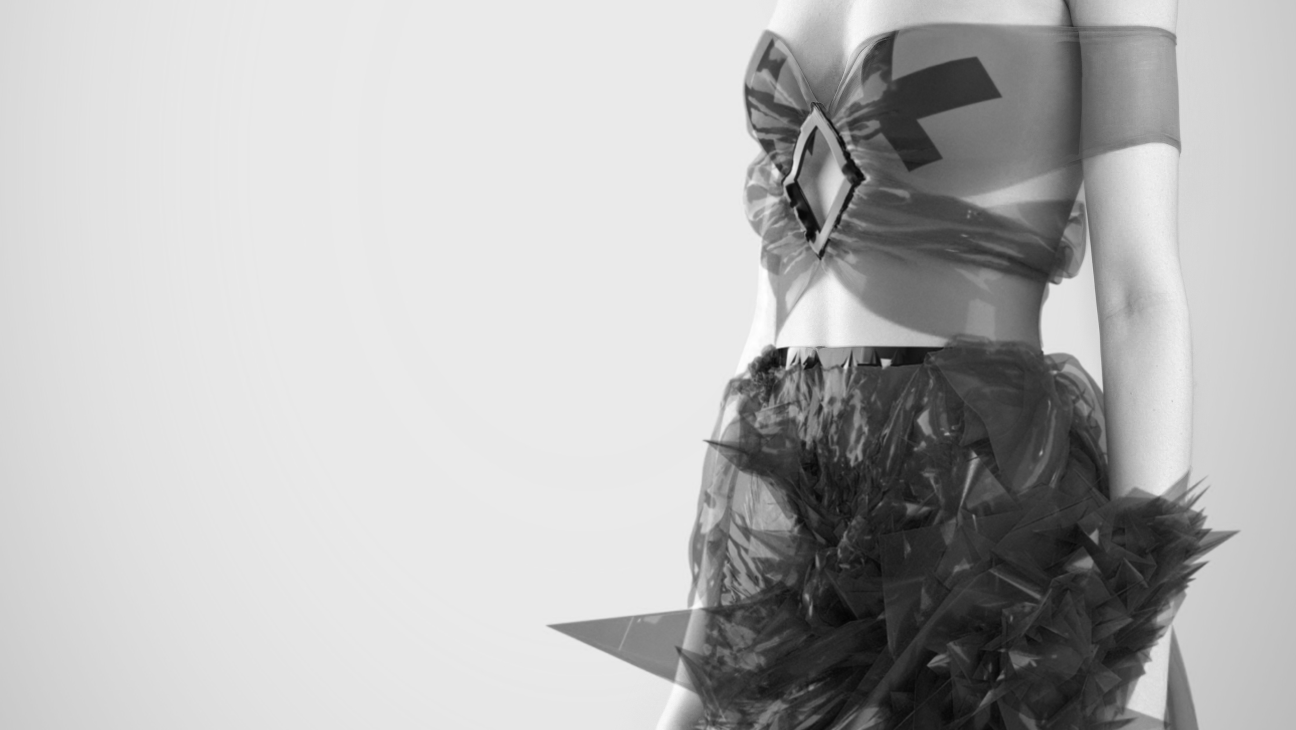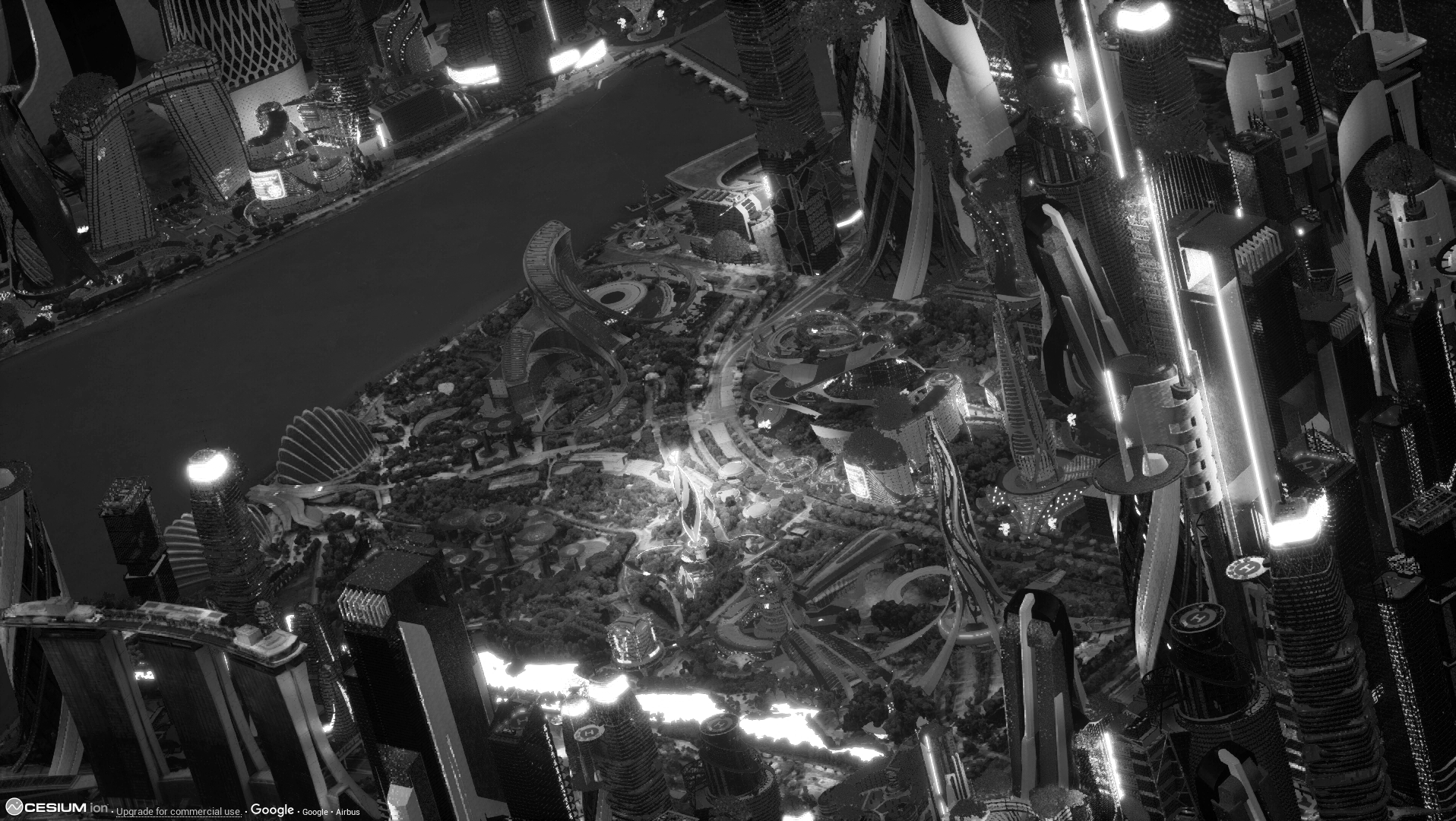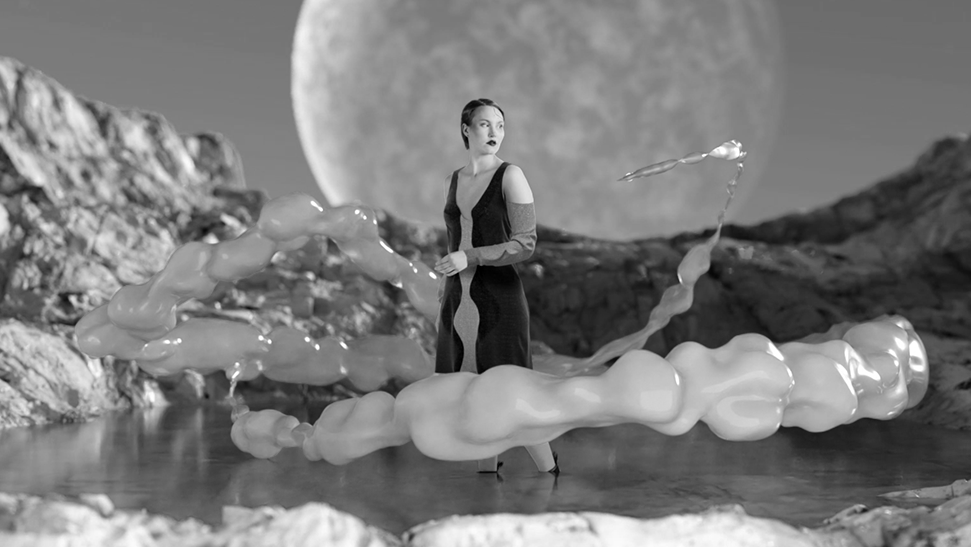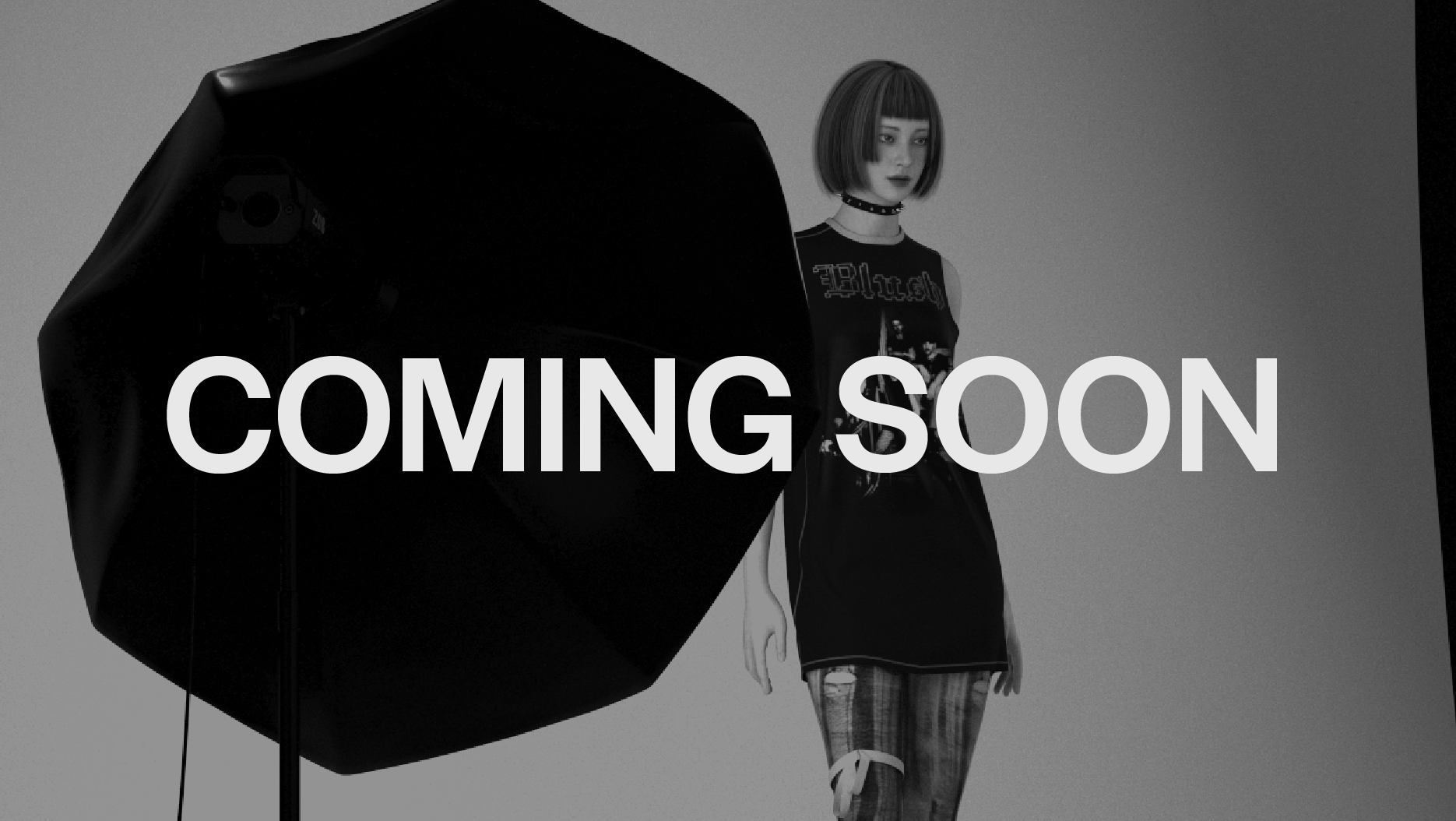This is a fully digital developed fashion collection aimed at GenZ. It is to be consumed in the virtual world. This Collection started as my bachelor thesis for fashion design - i finished my studies february 2024. Since then, i developed new ideas and little projects which add to the overall presentation.
Based on digital inspiration, completely digitally developed, designed and realised through to staging in virtual space, a collection has been created that can only be consumed digitally.
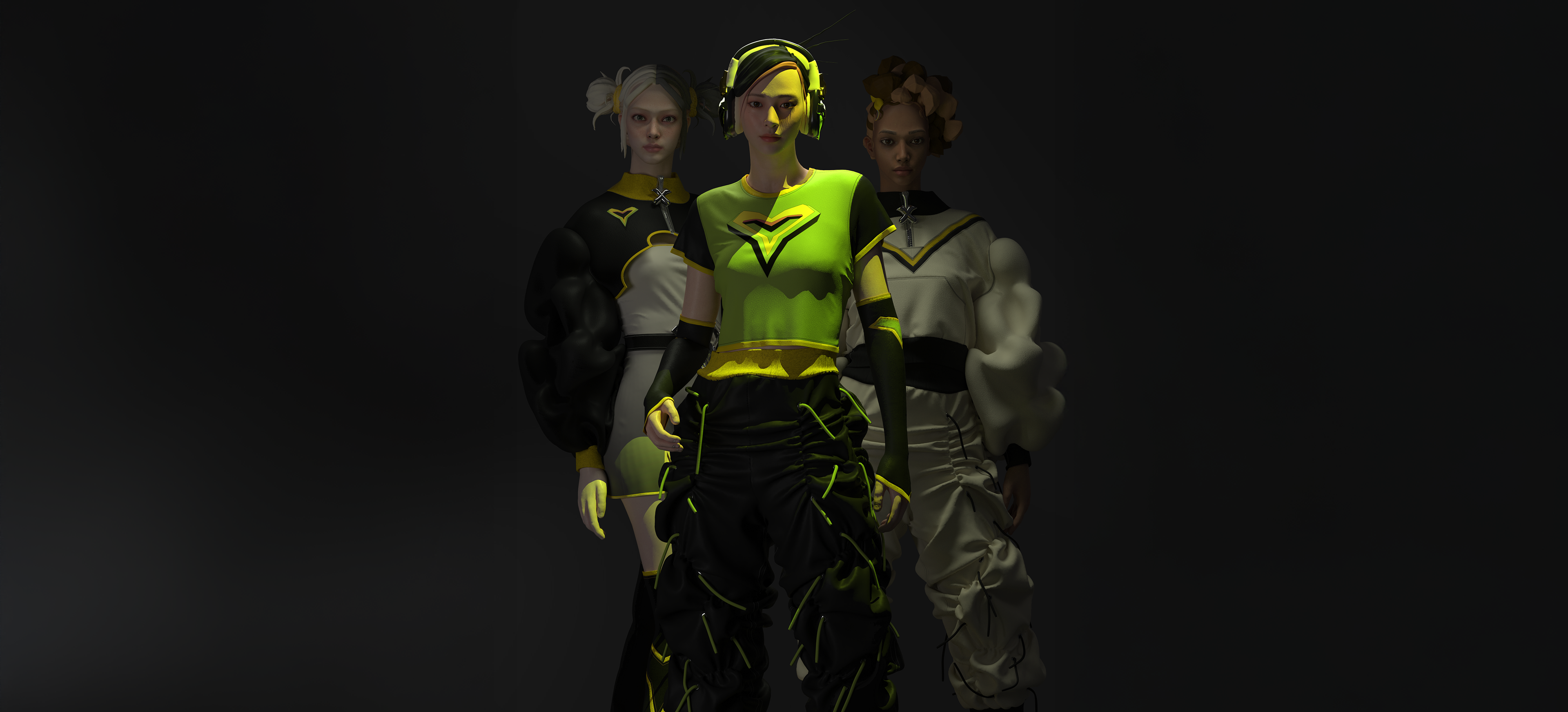
JET SET RADIO FUTURE (JSRF) is the second game (after JET SET RADIO) about a group of teenagers on inline skates who have to fight against hostile gangs, the corrupt police and a dangerous mega corporation in an alternative Tokyo. They do this by spray-painting the neighborhoods with graffiti and taking on their opponents in challenges and battles.
The game is accompanied by an exceptionally cool soundtrack compiled and composed by Hideki Naganuma.
JSRF is my absolute favorite game and was chosen as a source of inspiration not only because of this, but above all because of its extremely versatile visual appearance and the fact that it is still relevant within the fandom today, over 20 years later, and so popular that the game BOMB RUSH CYBERFUNK was released in the summer/fall, which takes direct inspiration from JSRF and is considered an indirect successor to the game within the fandom. In addition, Sega, who released JSRF, proved its current relevance by announcing a third installment of JET SET RADIO at the end of 2023.
Inspiration and the process:
I took over 700 screenshots during the gameplay, which were sorted out according to the criteria of usability. I used these to develop shapes, colors, lines, textures, patterns and symbols. The results were alienated, deformed, cut and mirrored in digital collages. They were then attached to digital figurines and further alienated. This helped them to move further away from the inspiration and develop their own design language.
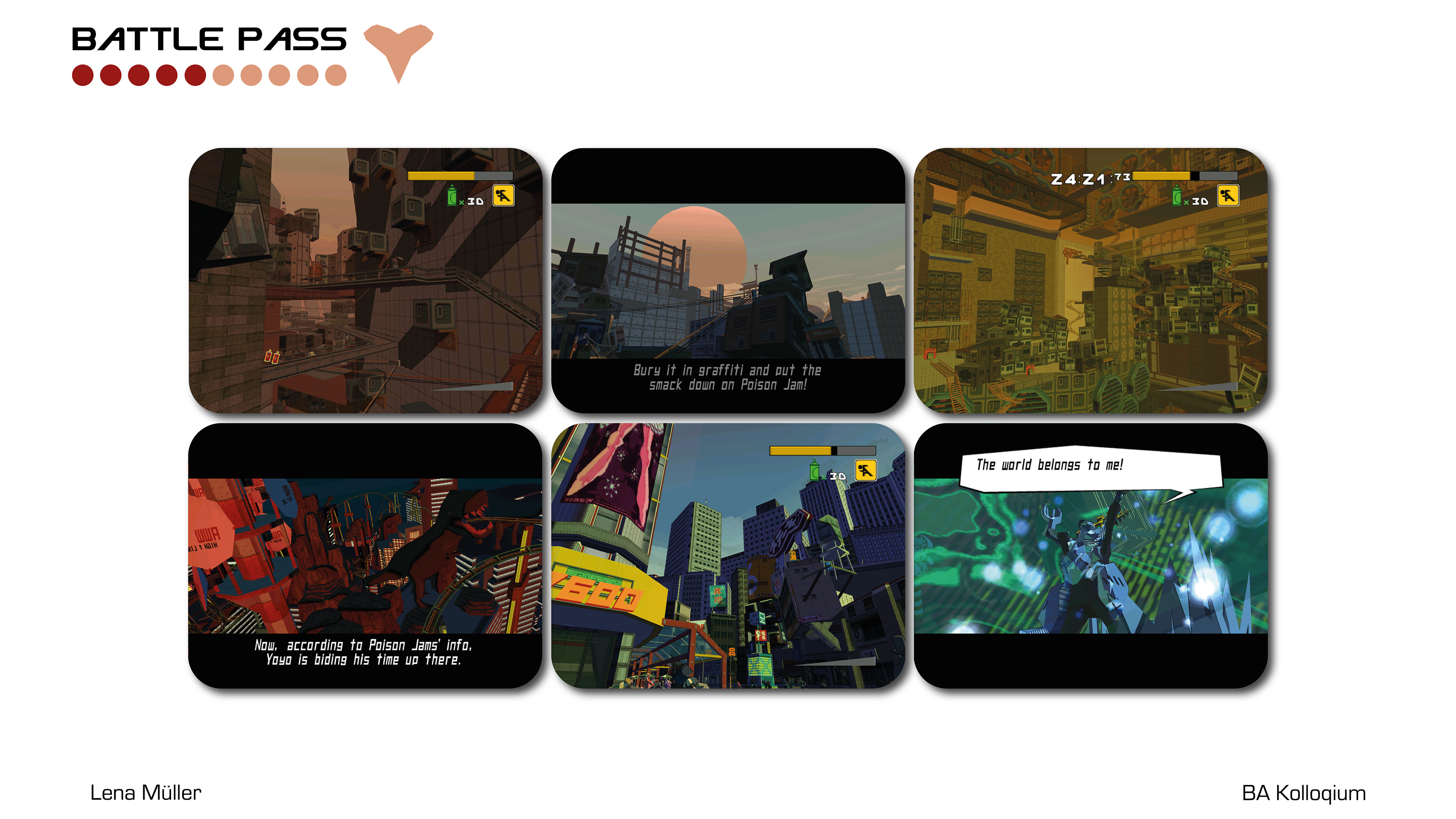

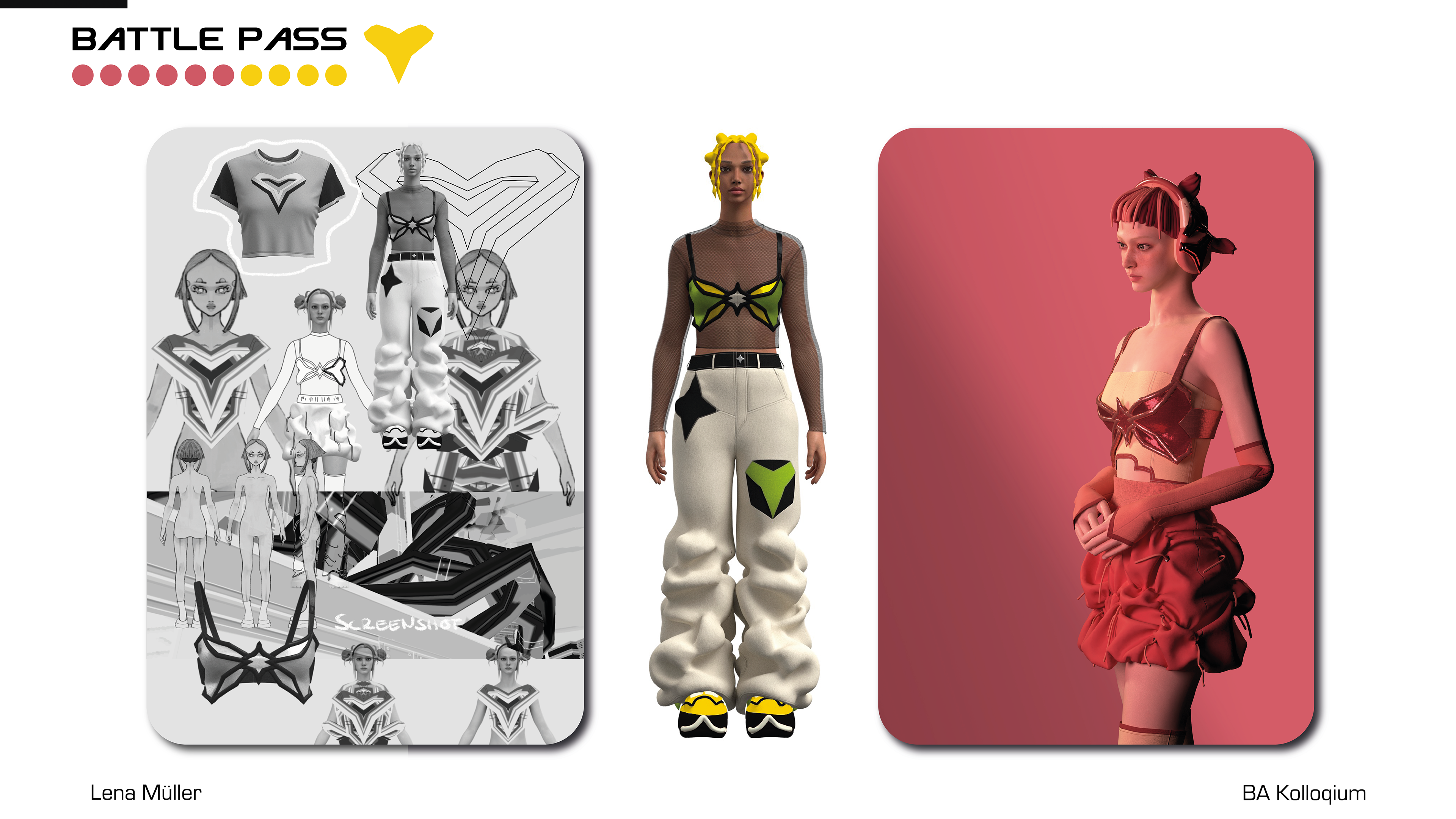
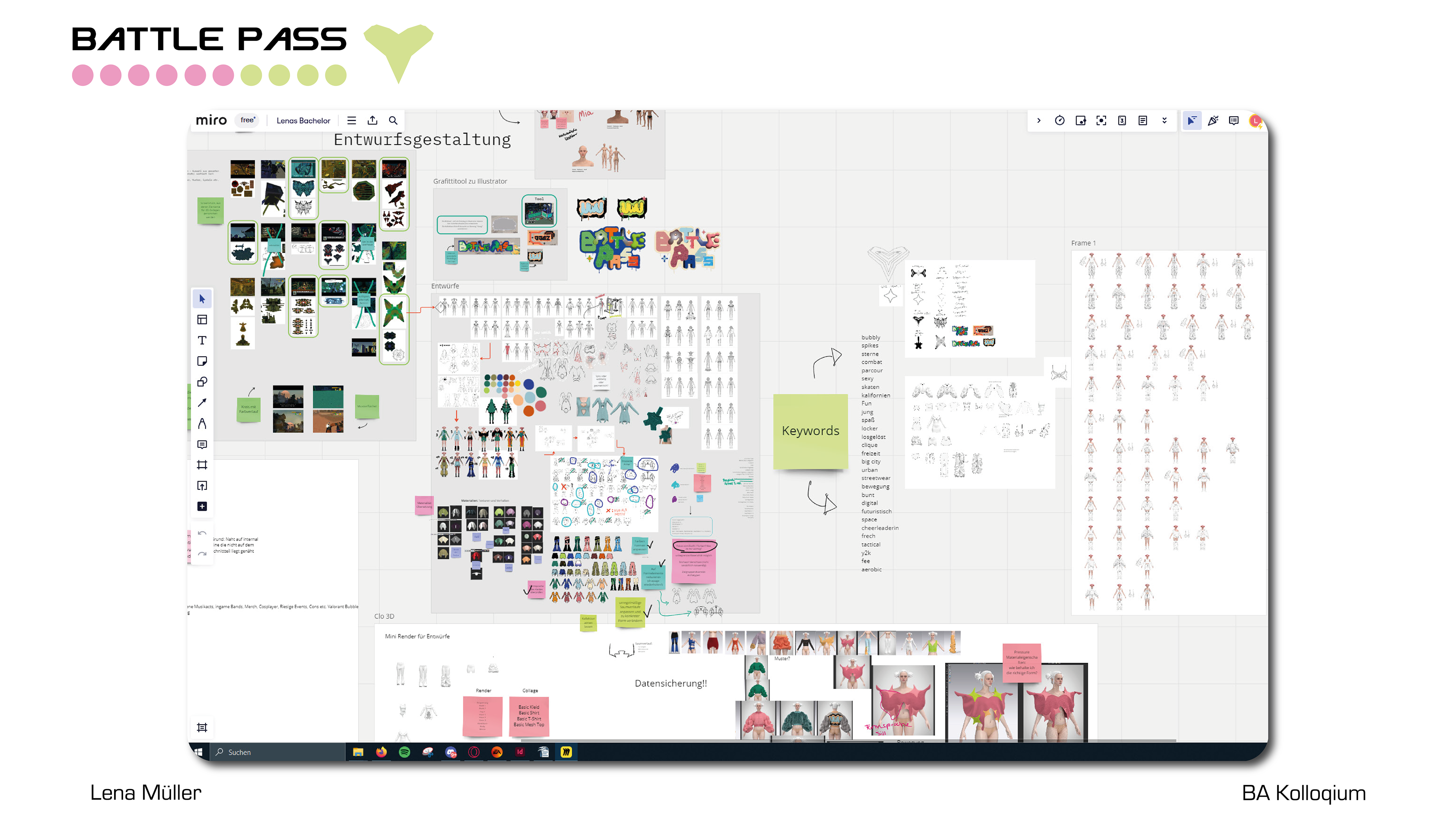
In addition to developing the clothing, I also wanted to design prints, for which I used a special tool: the Grafitti Editor integrated in JSRF. I then finalized the resulting designs in Adobe Illustrator. All prints are designed this way.


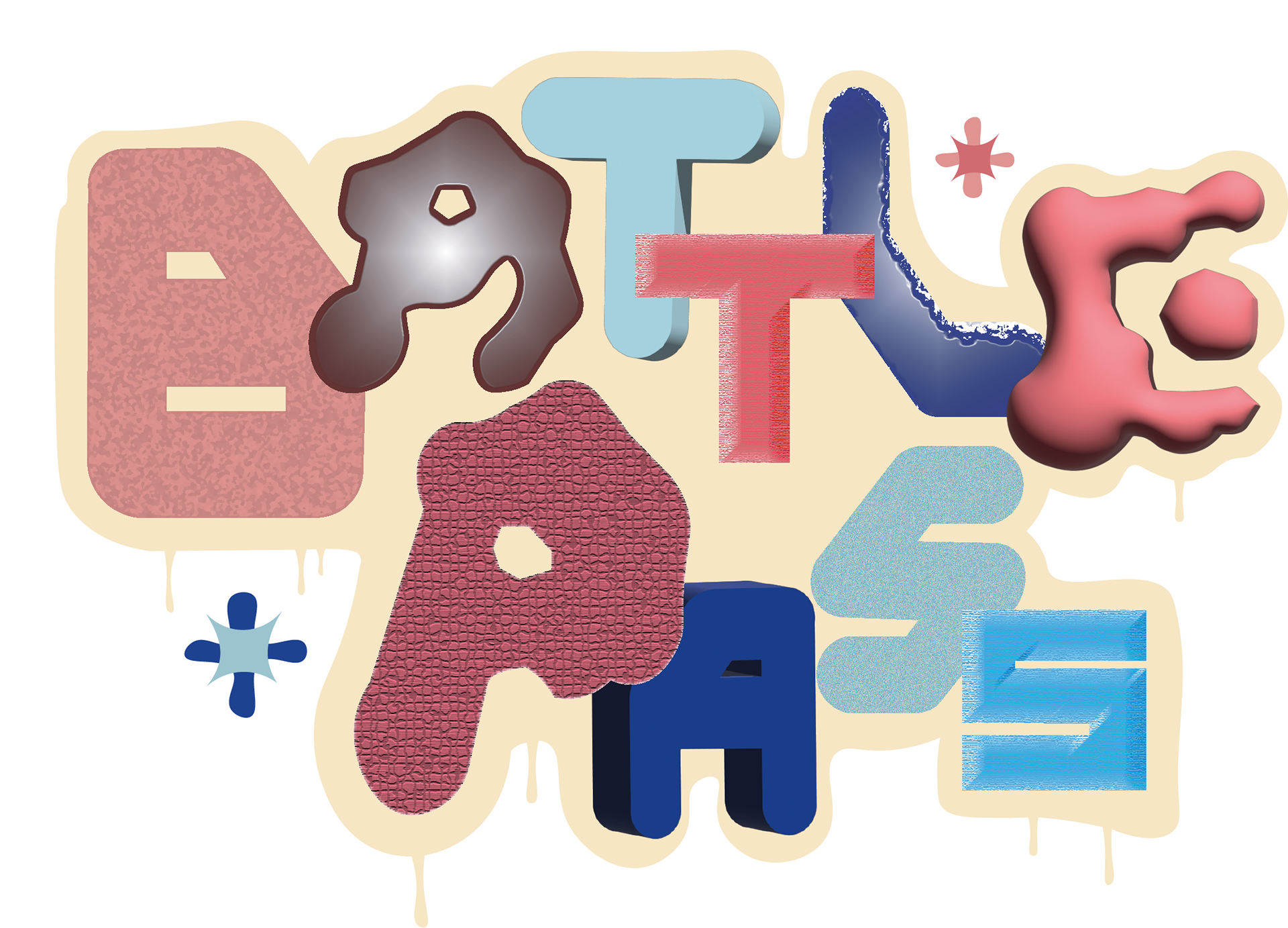


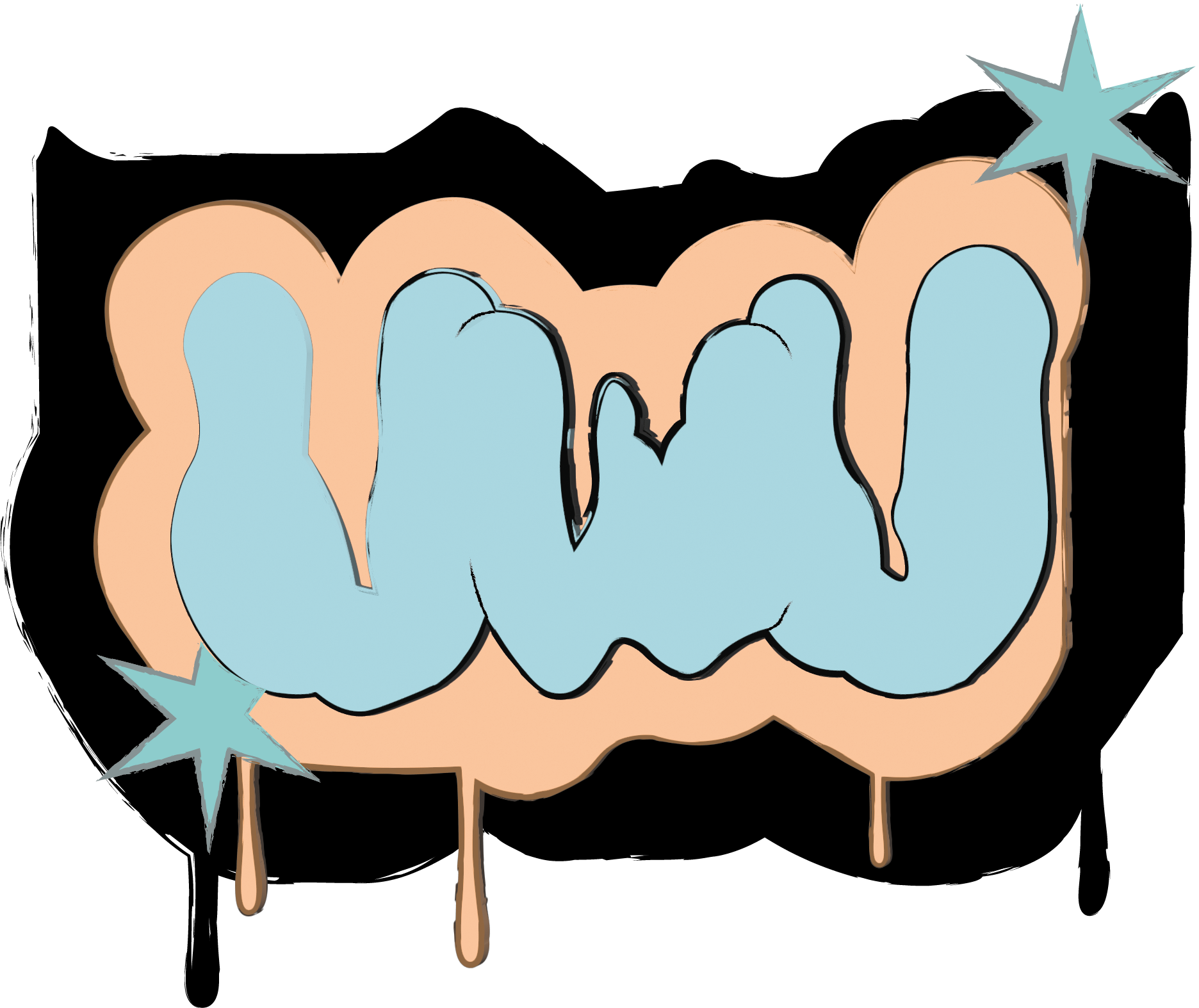
The colors of the collection were also taken from the screenshots and combined into a colorful palette. They are divided into individual color families.
That was important, because the collection was imagined being used in a video game. to make it easier for players without much fashion sense, every piece of clothing not only should look good with one another, they also should be sorted into colour groups, so that the players can create cohesive looks alltogether.
That was important, because the collection was imagined being used in a video game. to make it easier for players without much fashion sense, every piece of clothing not only should look good with one another, they also should be sorted into colour groups, so that the players can create cohesive looks alltogether.
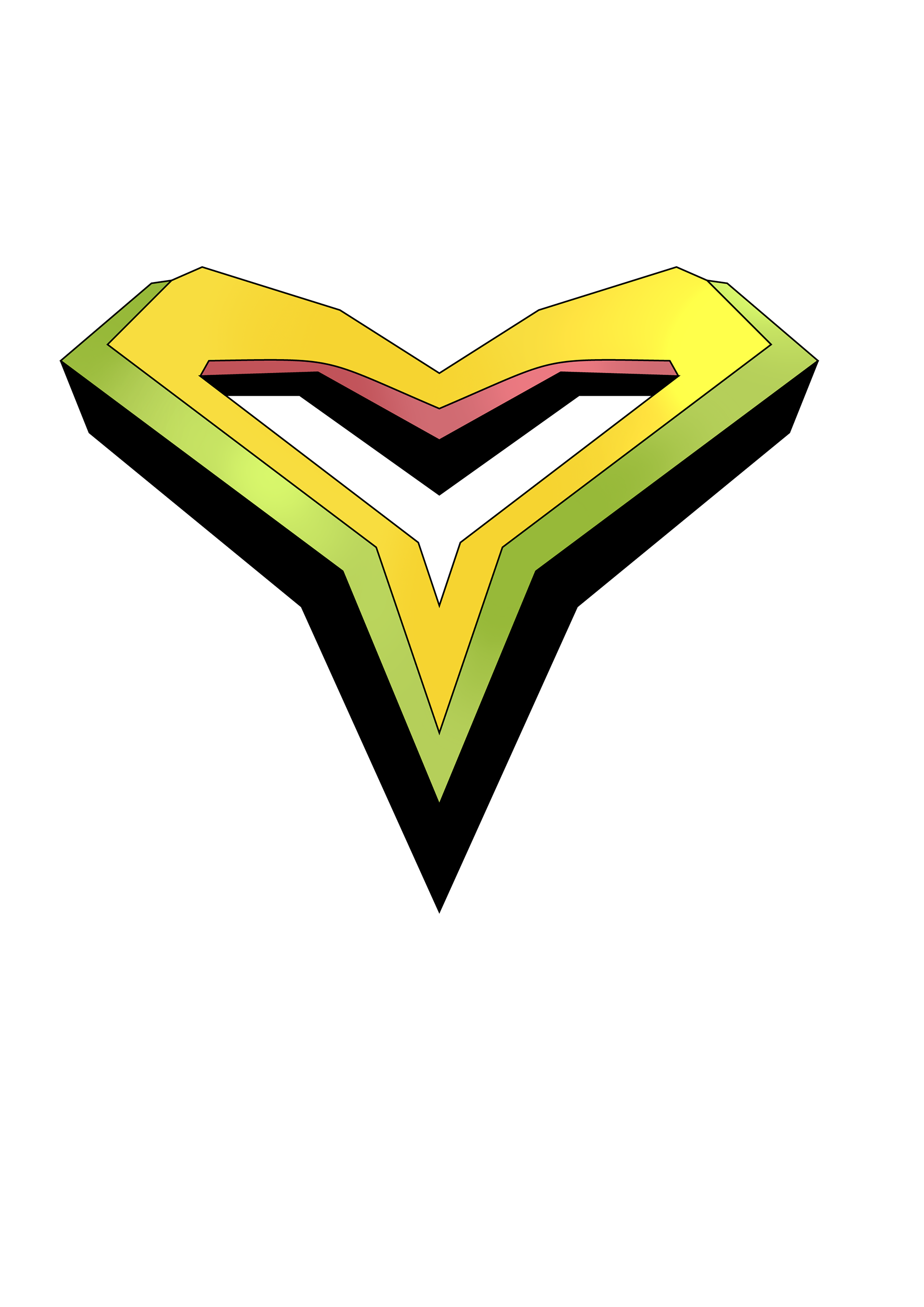
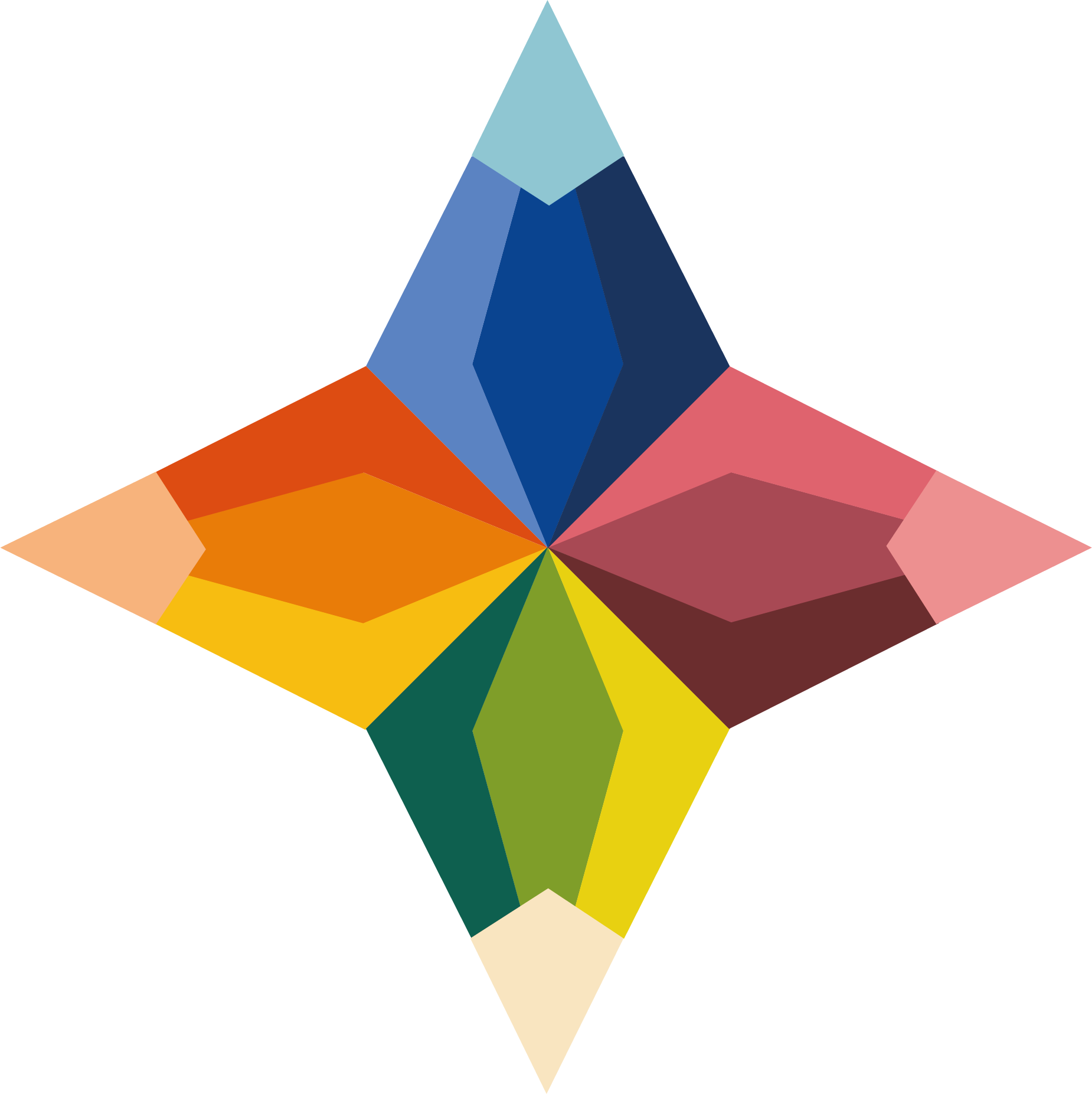
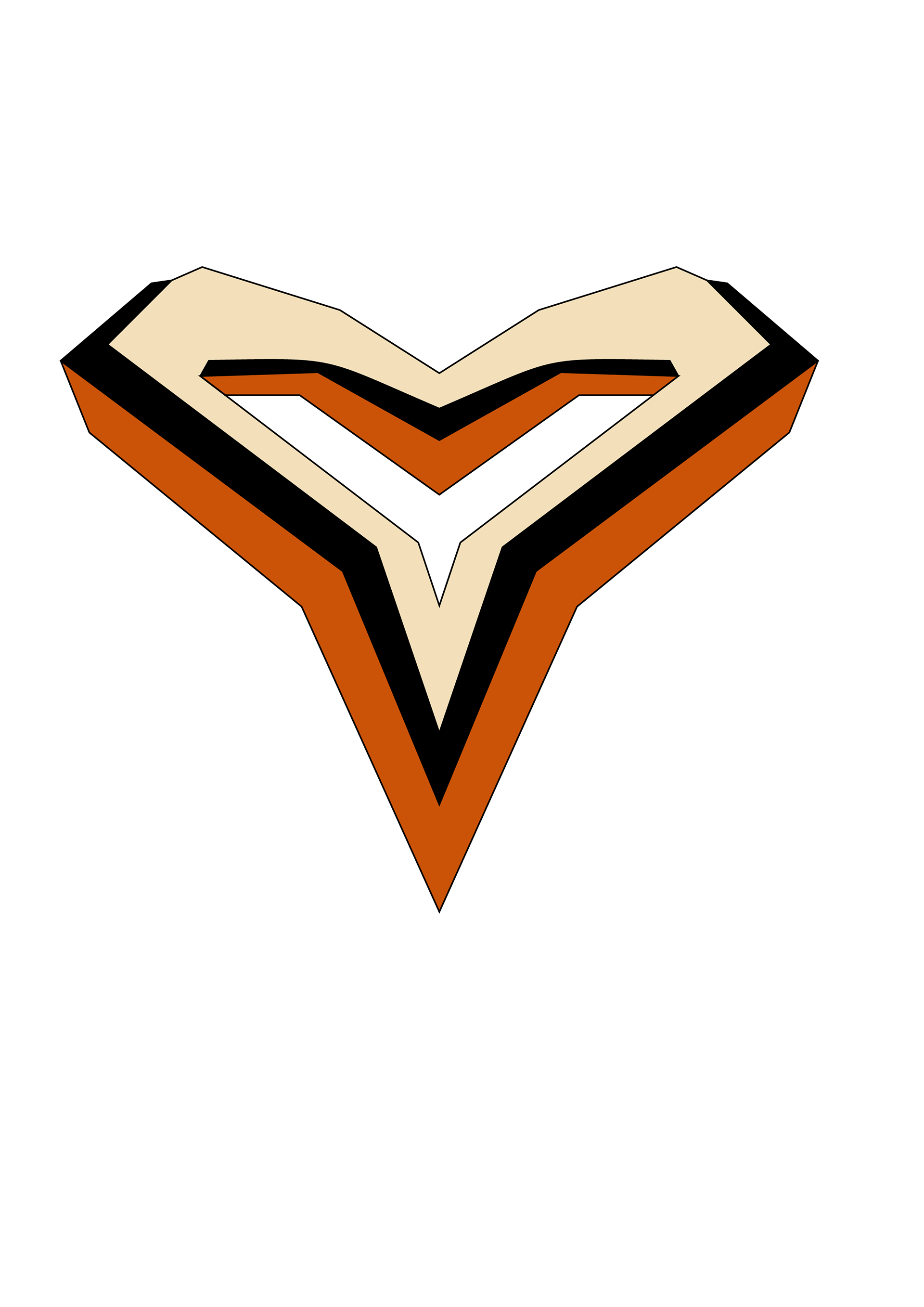
As the collection was created as part of my bachelor's thesis in fashion design, I didn't have the time to create my own avatars. That's why I chose Mia, Yuna and Naomi from the CLO set as my models. To further individualize them and style them for my collection, I designed and modeled different hairstyles, headphones and shoes in Nomad Sculpt on my iPad. I also designed a zipper, which was also implemented in Nomad Sculpt.
Since I had to know a lot of programs and didn't have the time to learn more new ones, I just exported the models as OBJ files and created them in Clo3D. As a result, both the hairstyle and the shoe moved with the avatar, but the shoe didn't know that it was a shoe and therefore often deformed when the avatar changed pose. I was also limited with the hair length, as too long strands broke the hair file when the avatar moved. Colors and materials were also set in Clo3D.

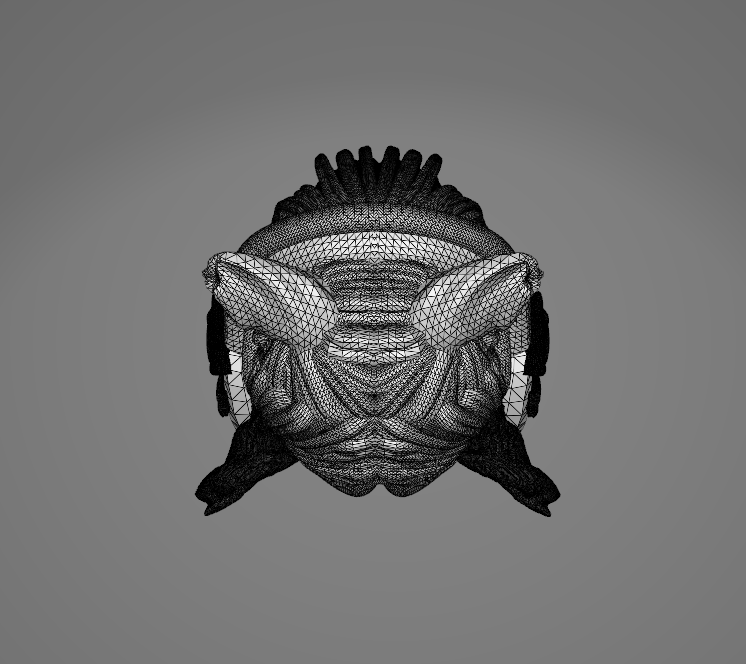
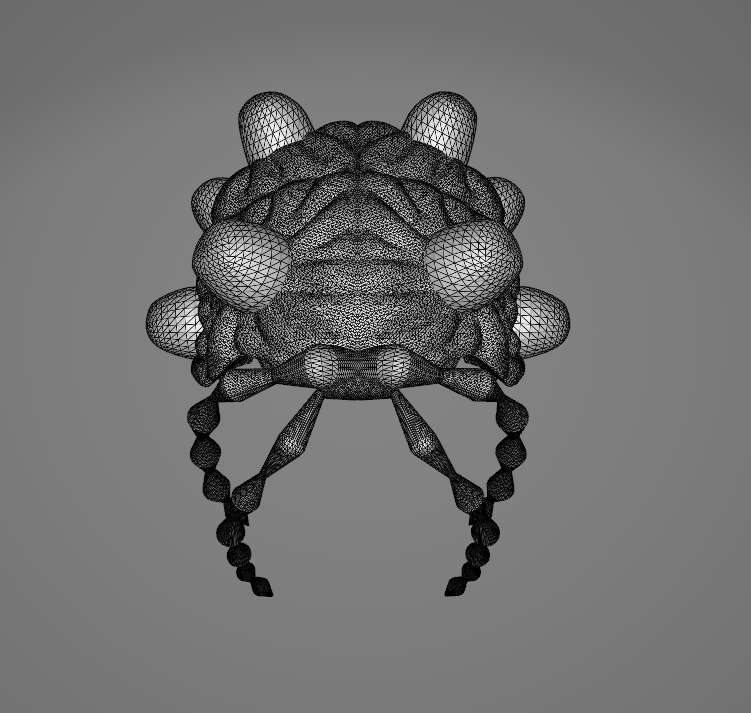
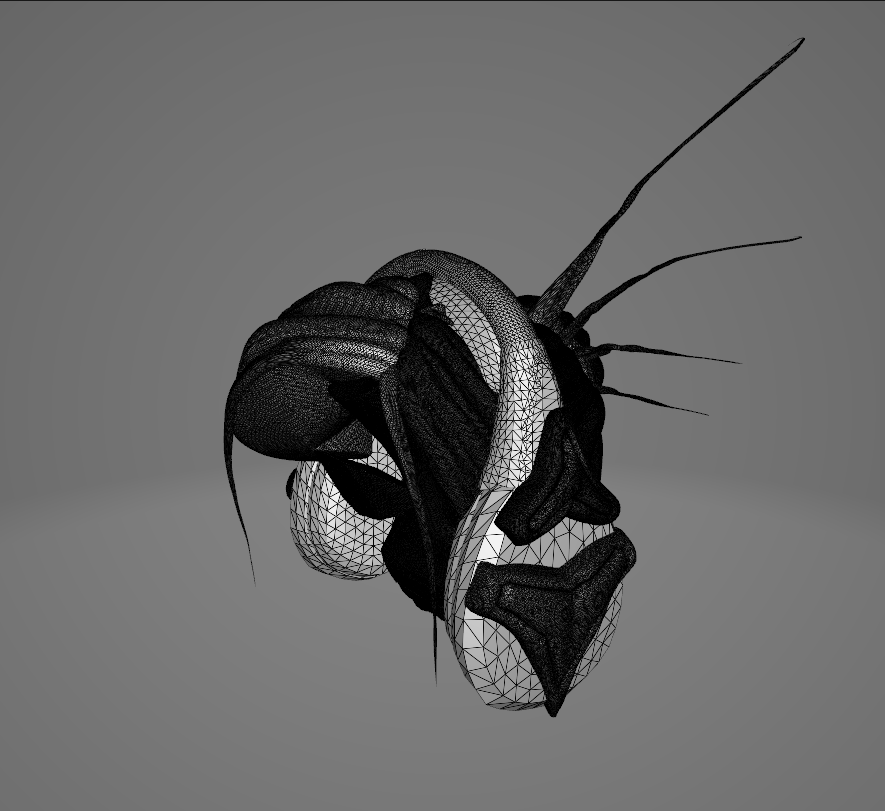
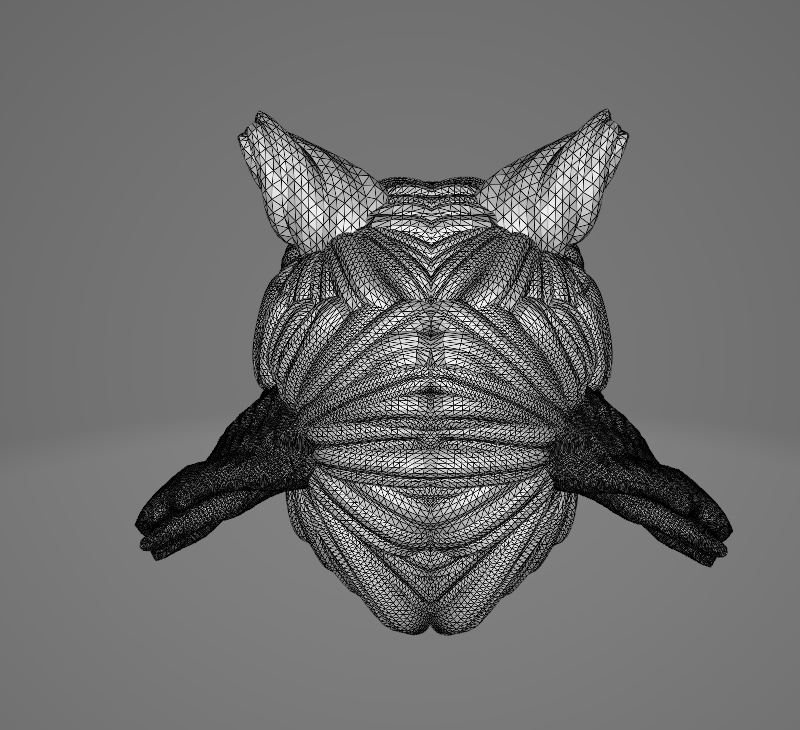
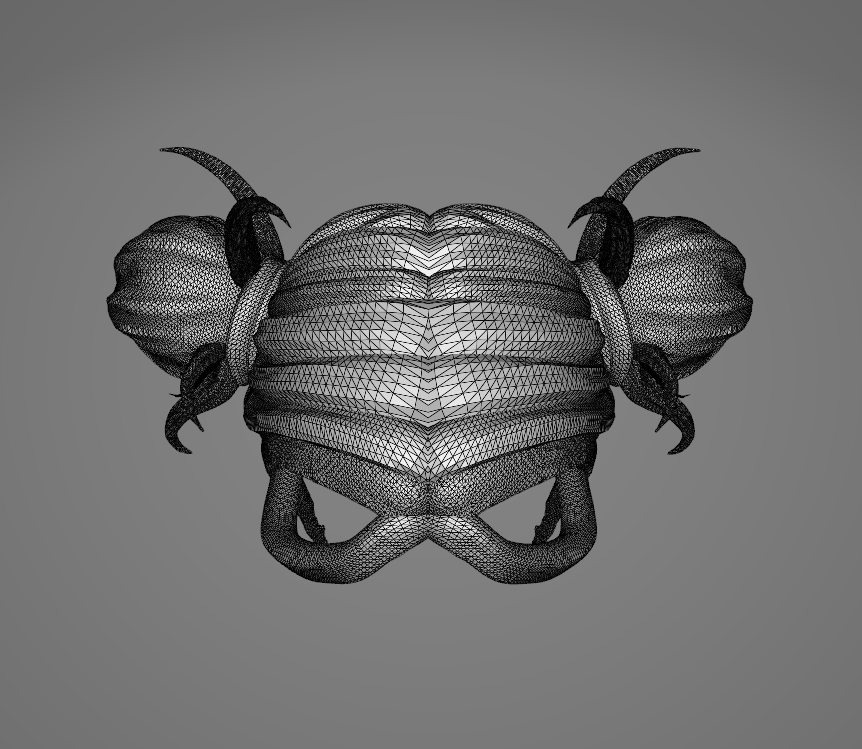
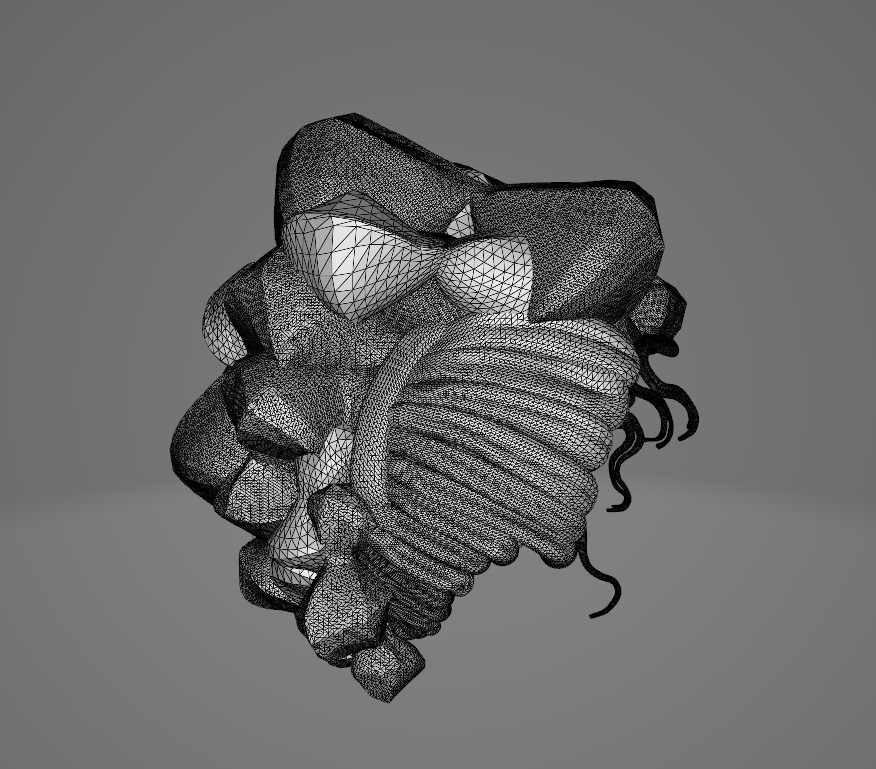

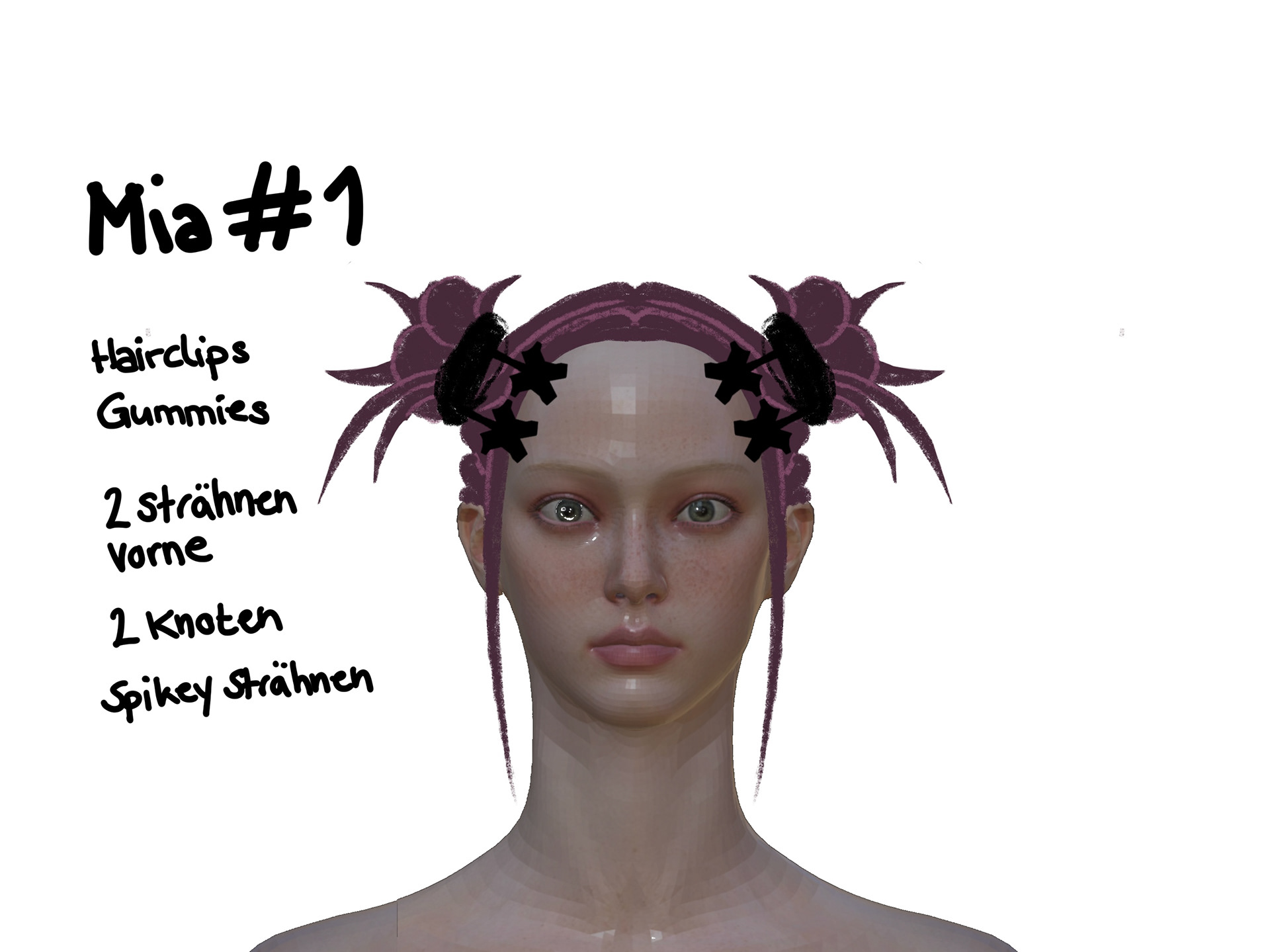


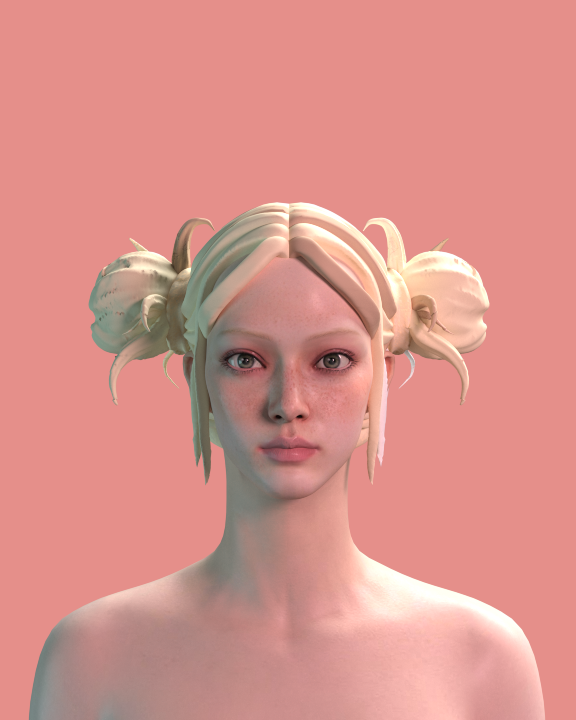
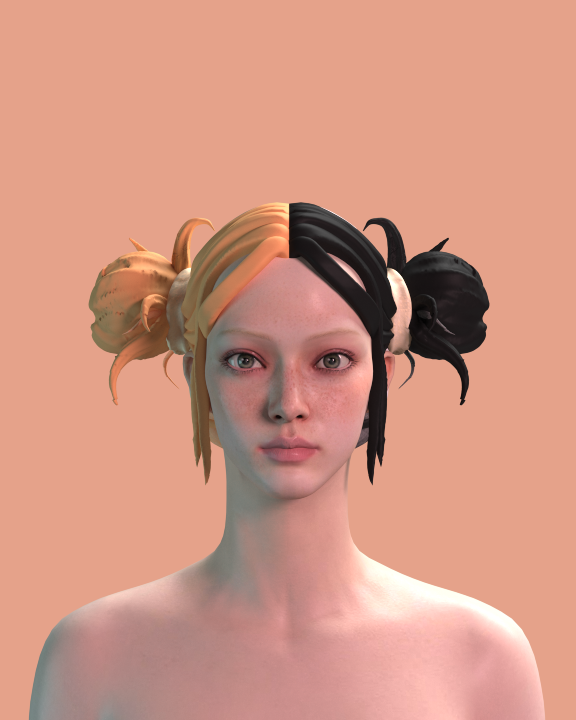
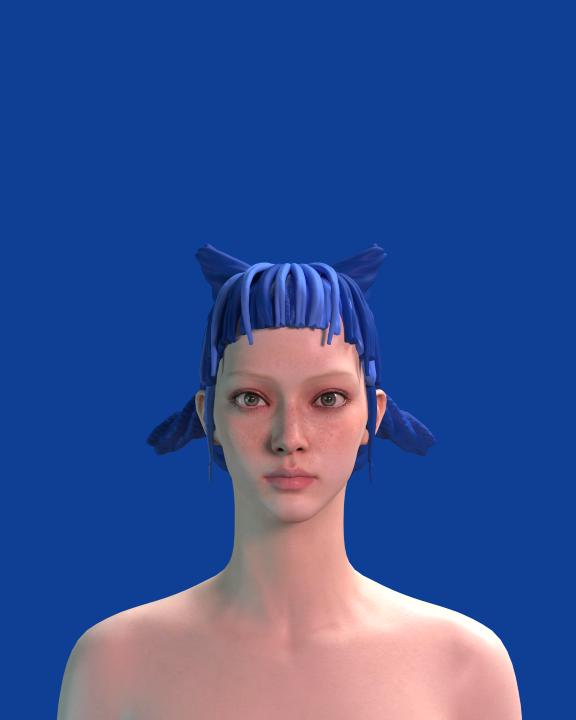



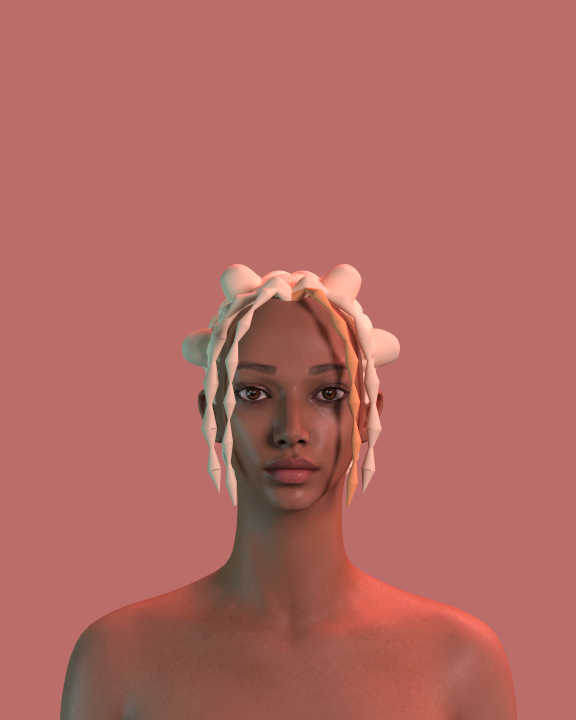
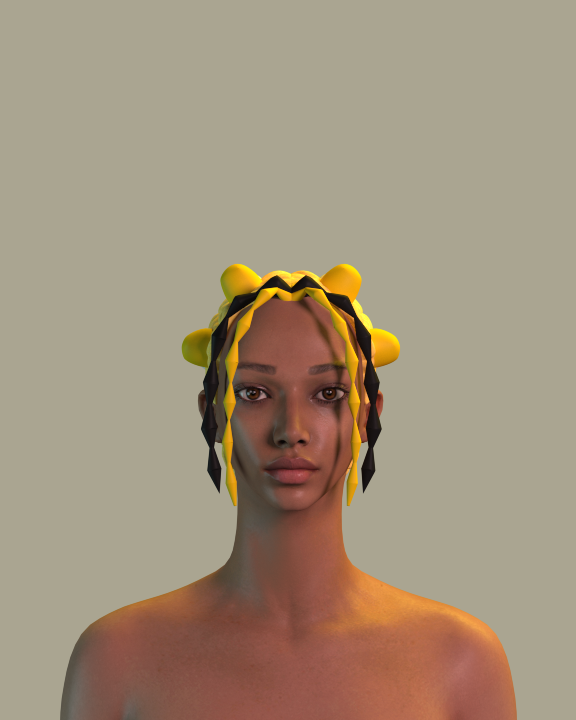
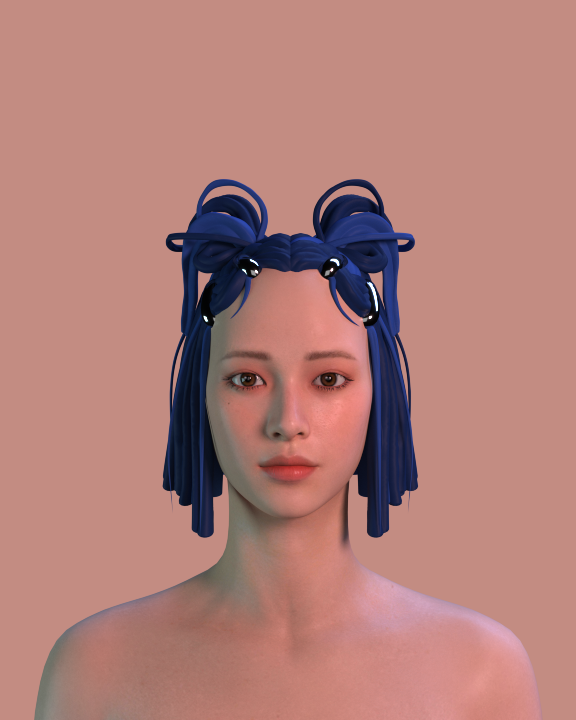
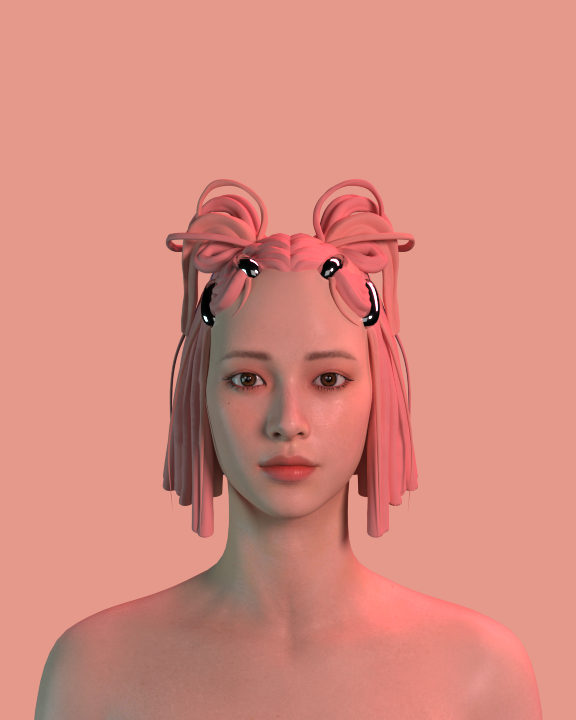

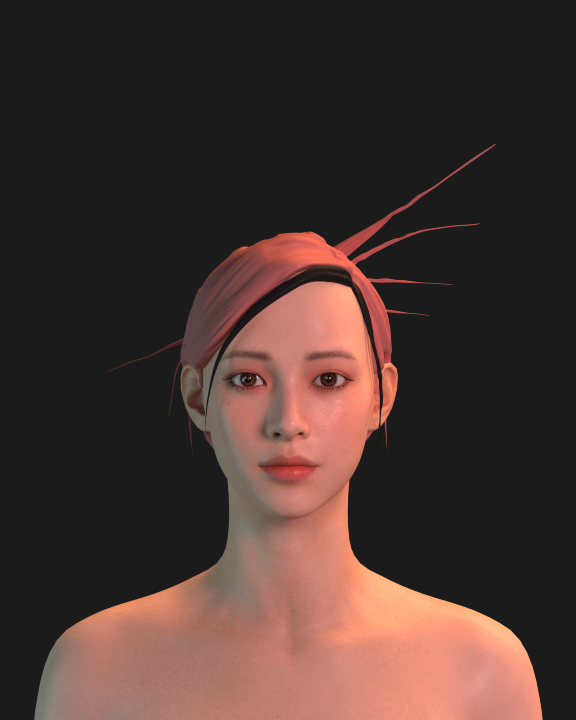
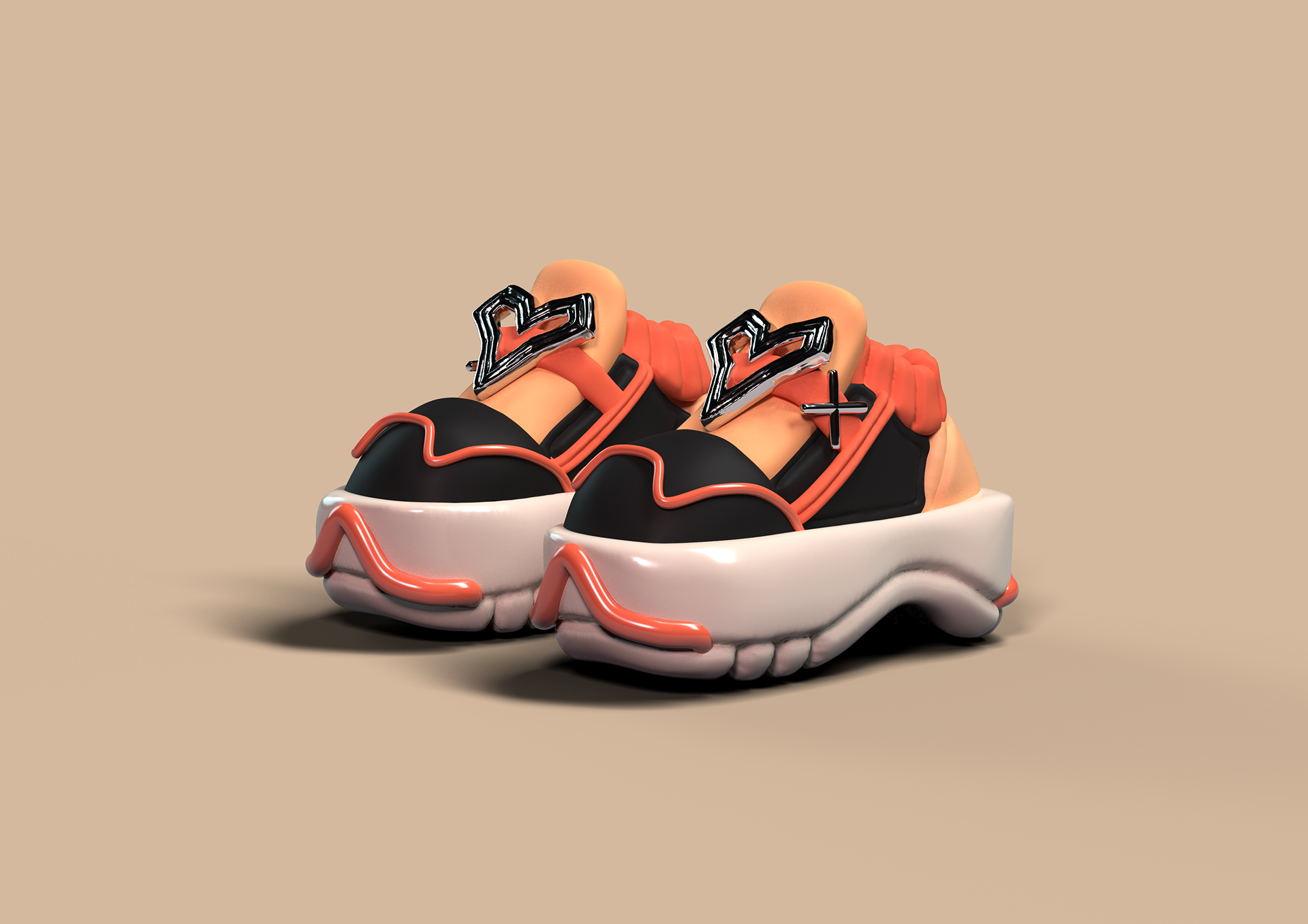
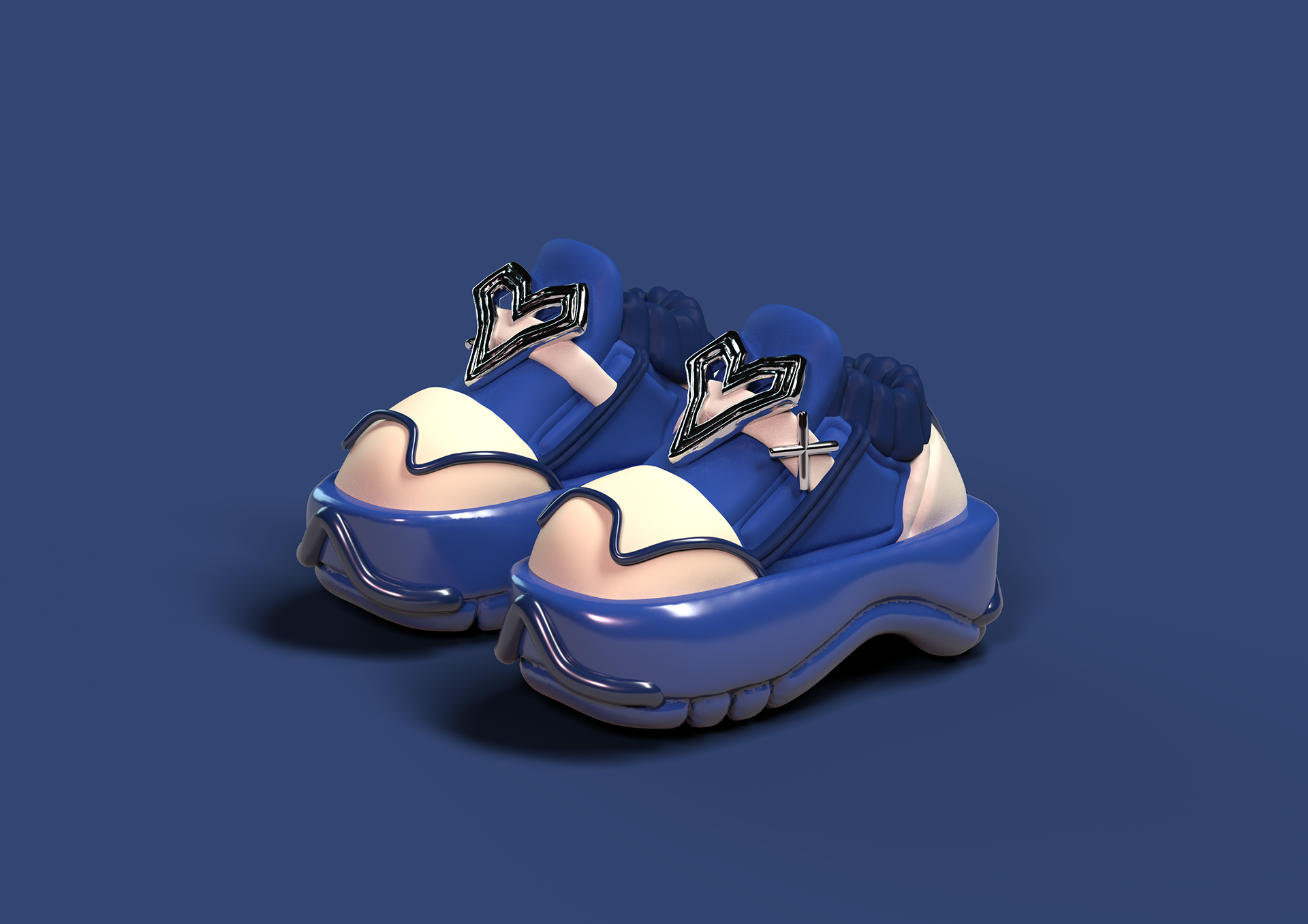
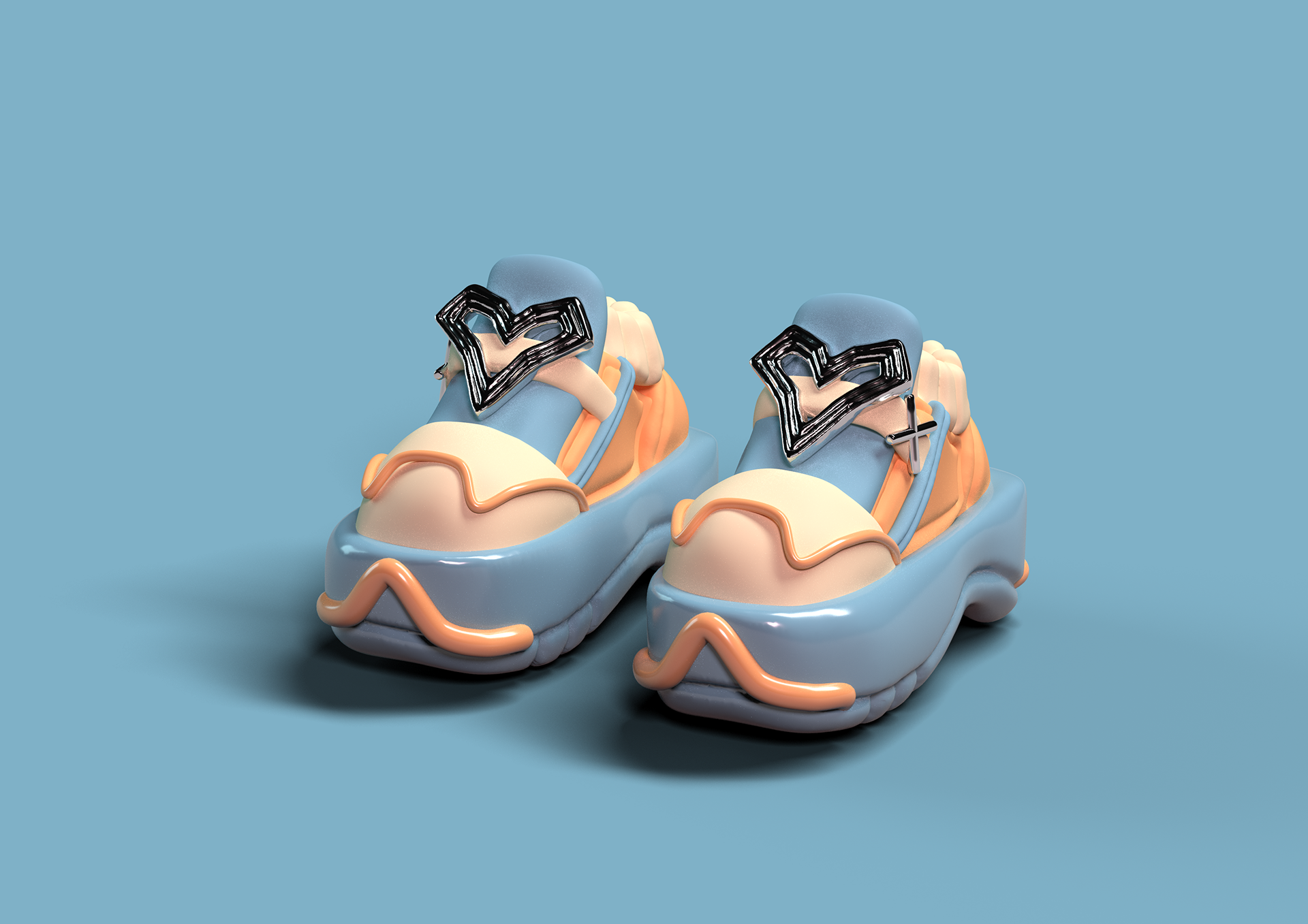
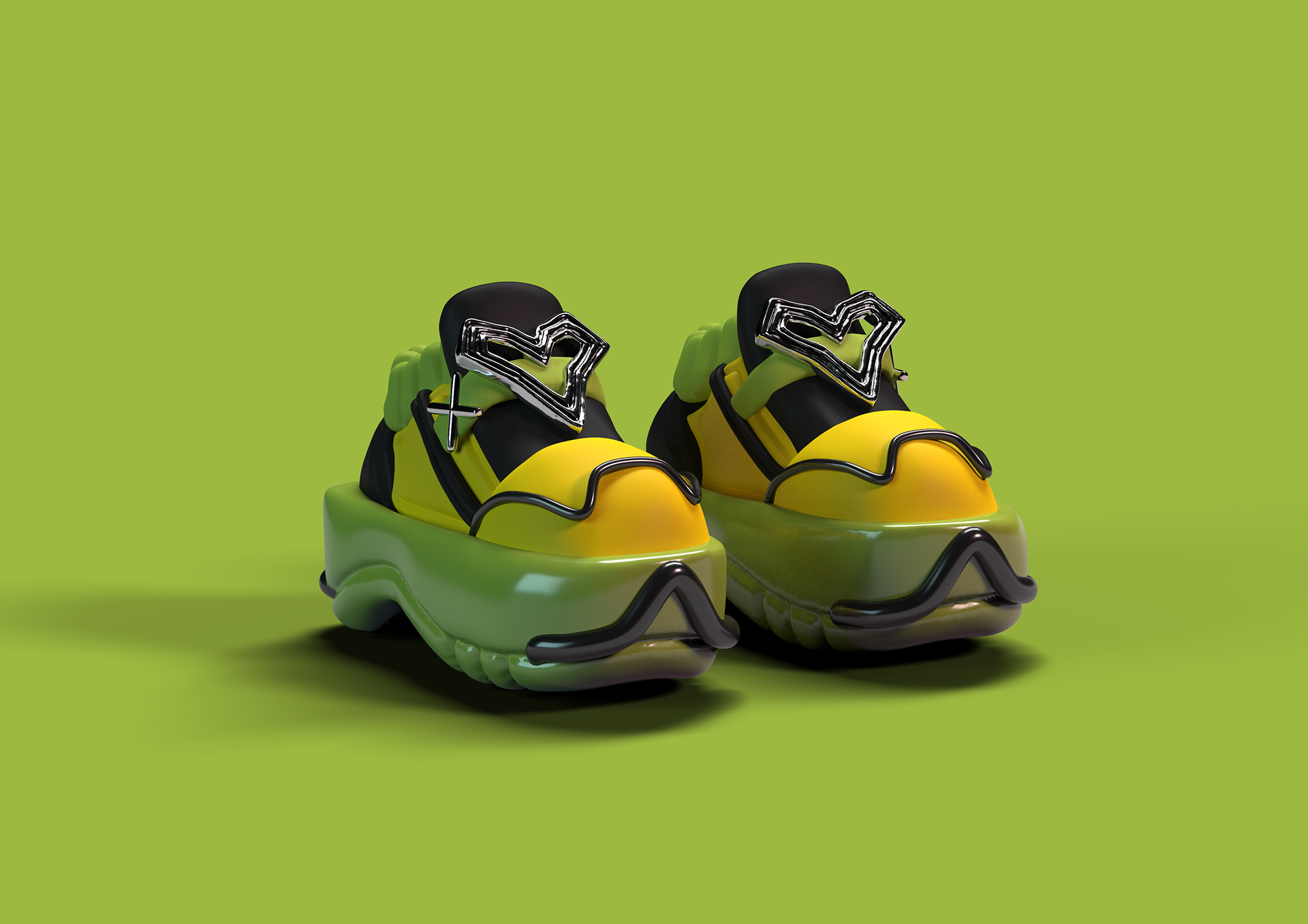
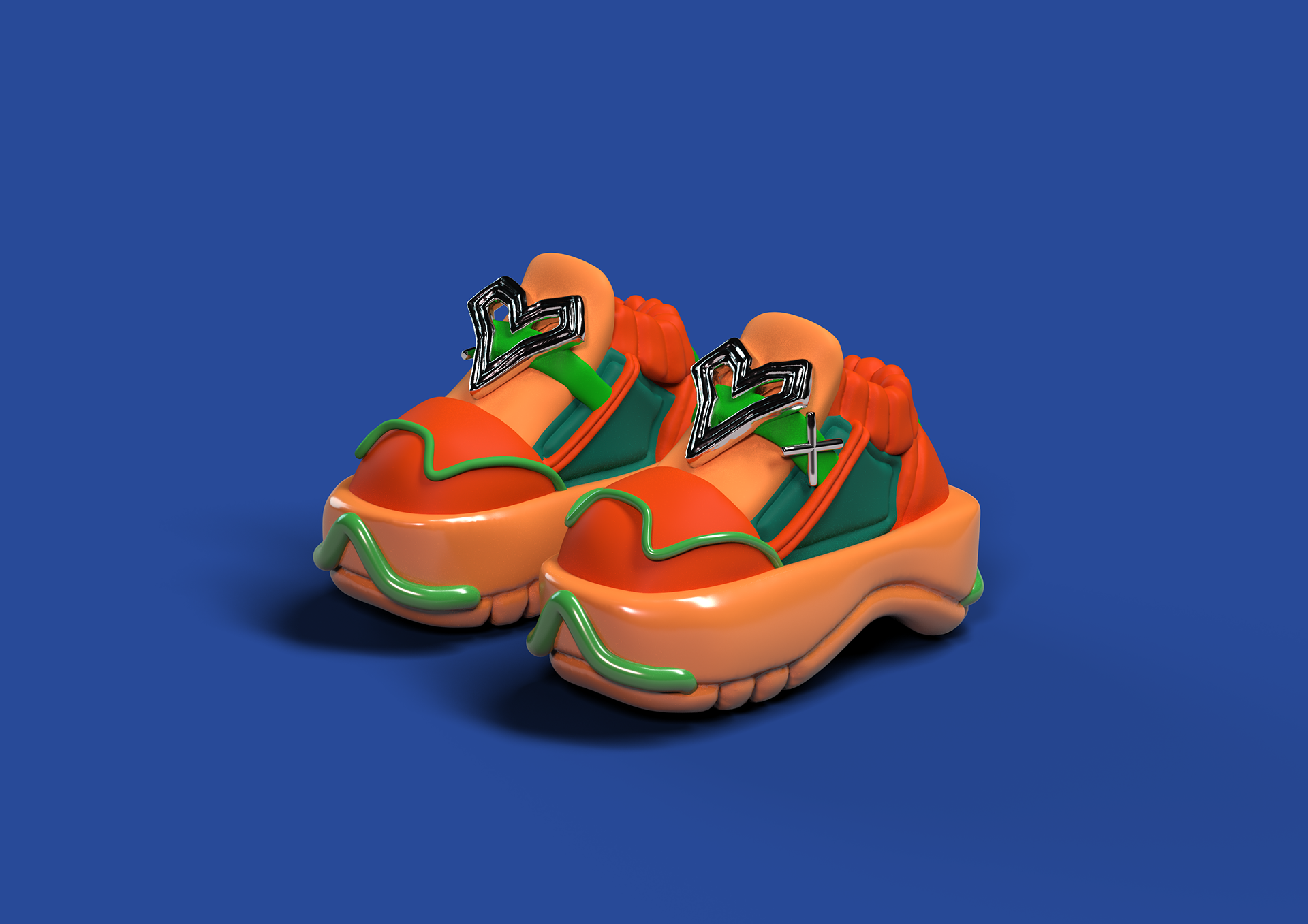
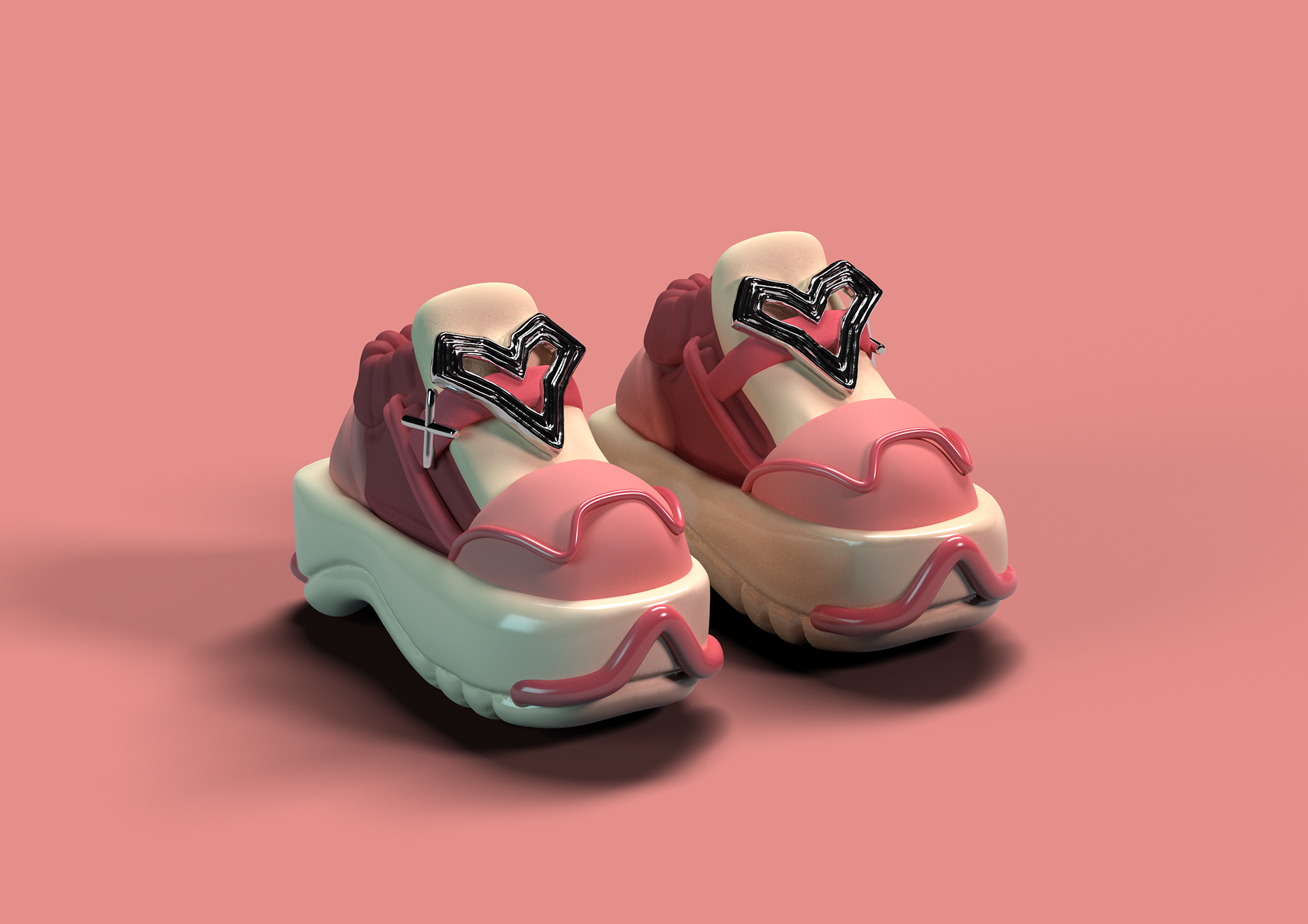
For me, the special thing about working purely digitally is the opportunity to design things that don't have to work in the real world. What's more, working with virtual fashion also makes some of the work steps that I would have to do when designing real clothes easier. For example, the pants shown above: instead of a regular construction, I designed the pants to give the illusion of drawstring pants from the outside when they are actually pants with underpants with the drawstrings sewn on.
All garments were made in Clo3D. Additions to the avatars and the zipper come from Nomad Sculpt. The prints and color gradients were designed with the JSRF Grafitti Editor, Adobe Illustrator and Procreate
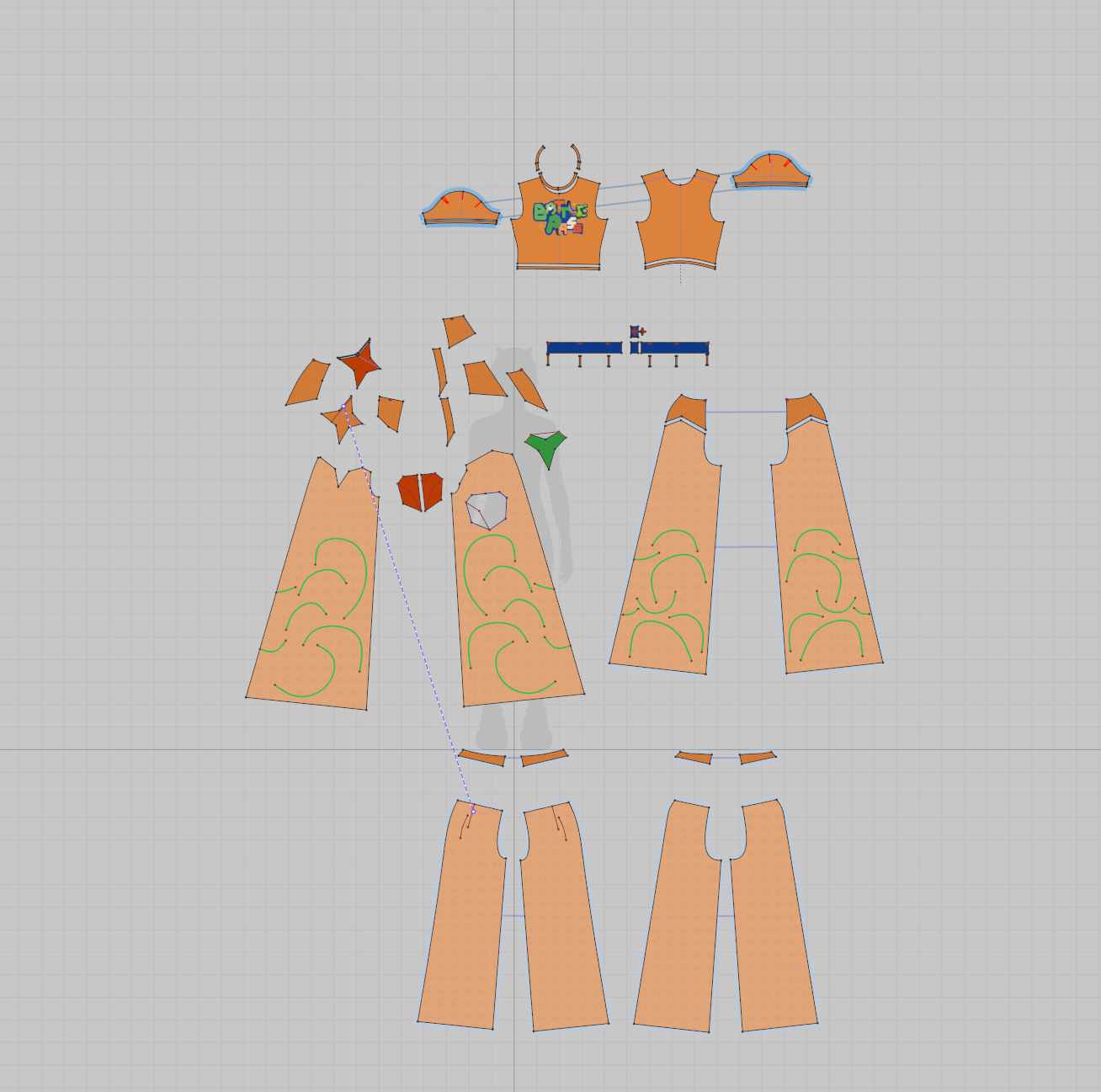


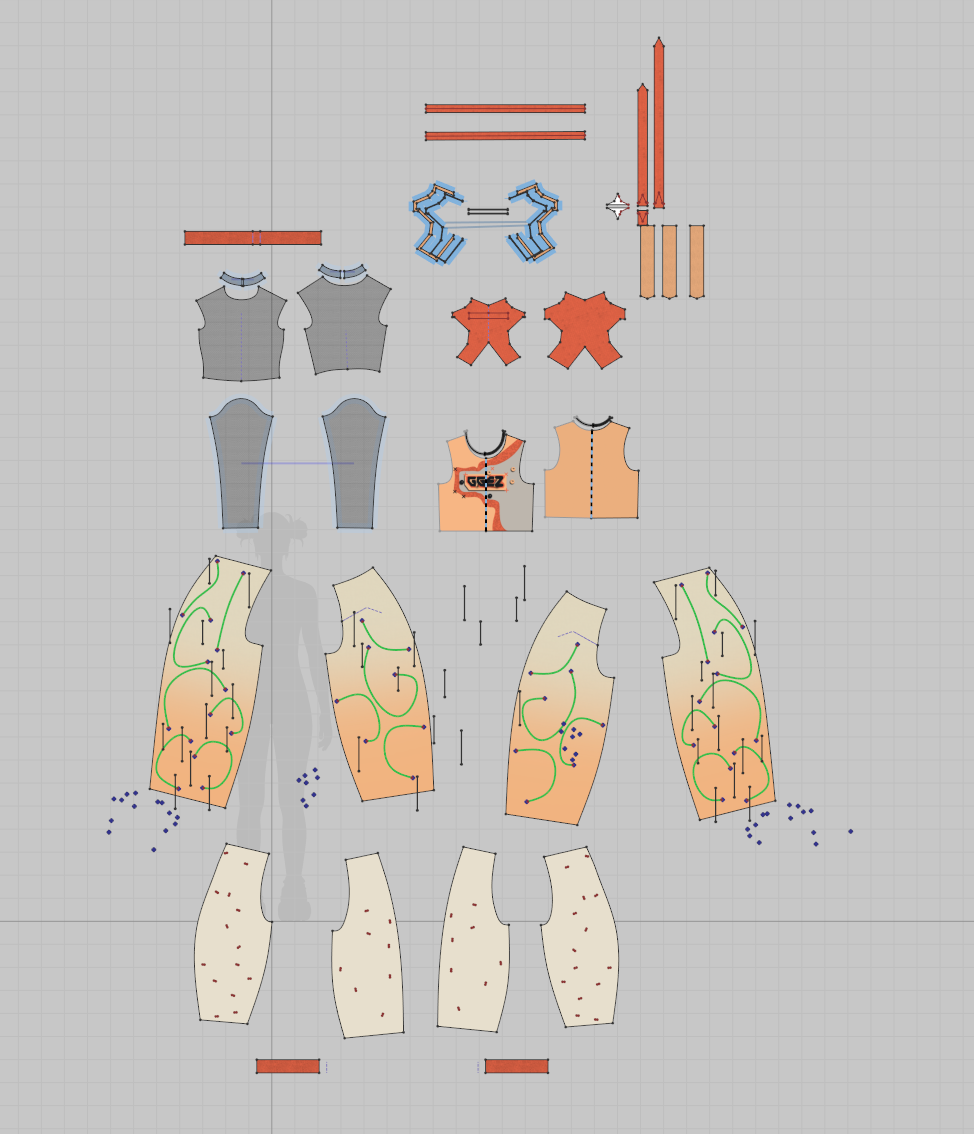

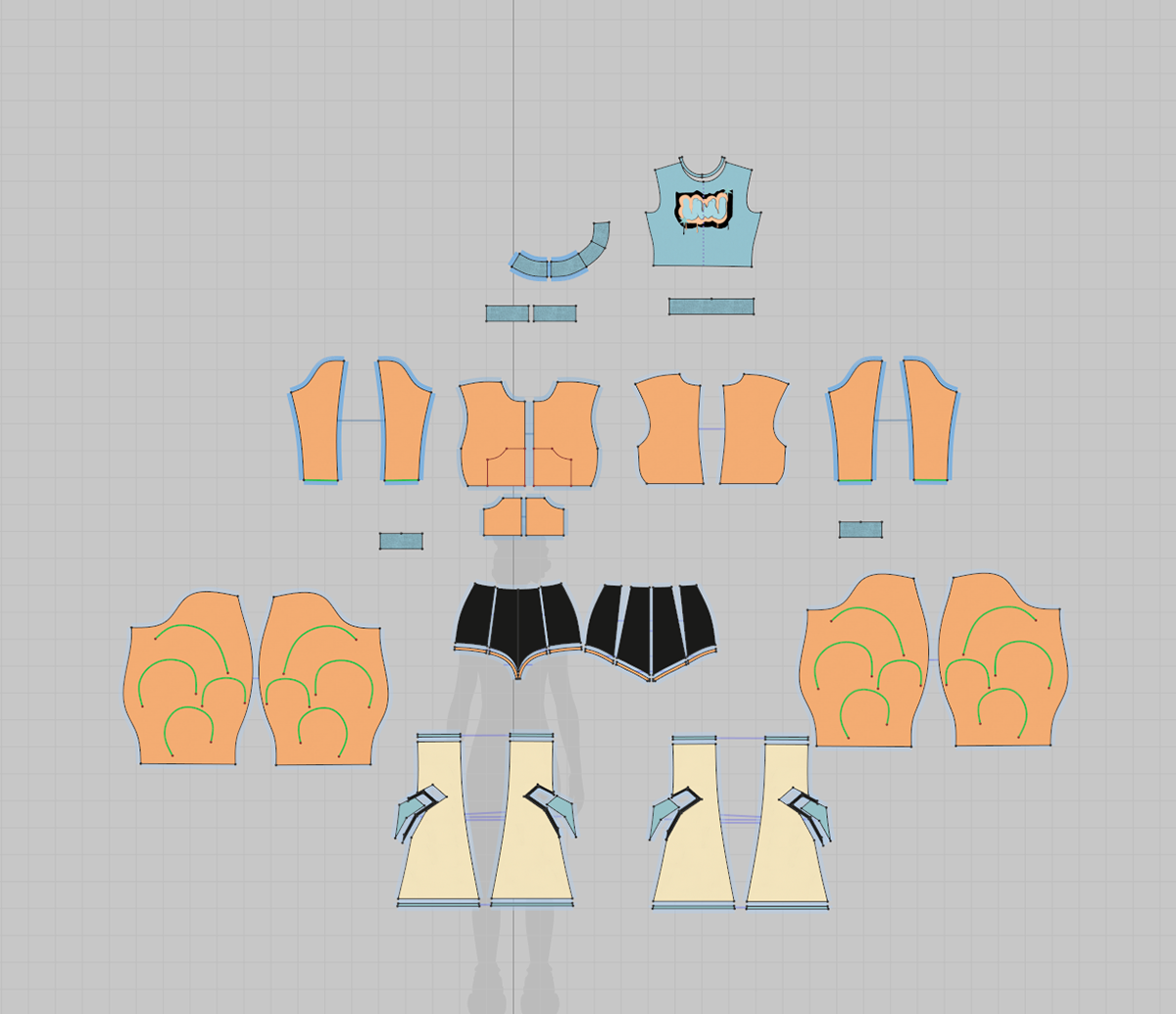
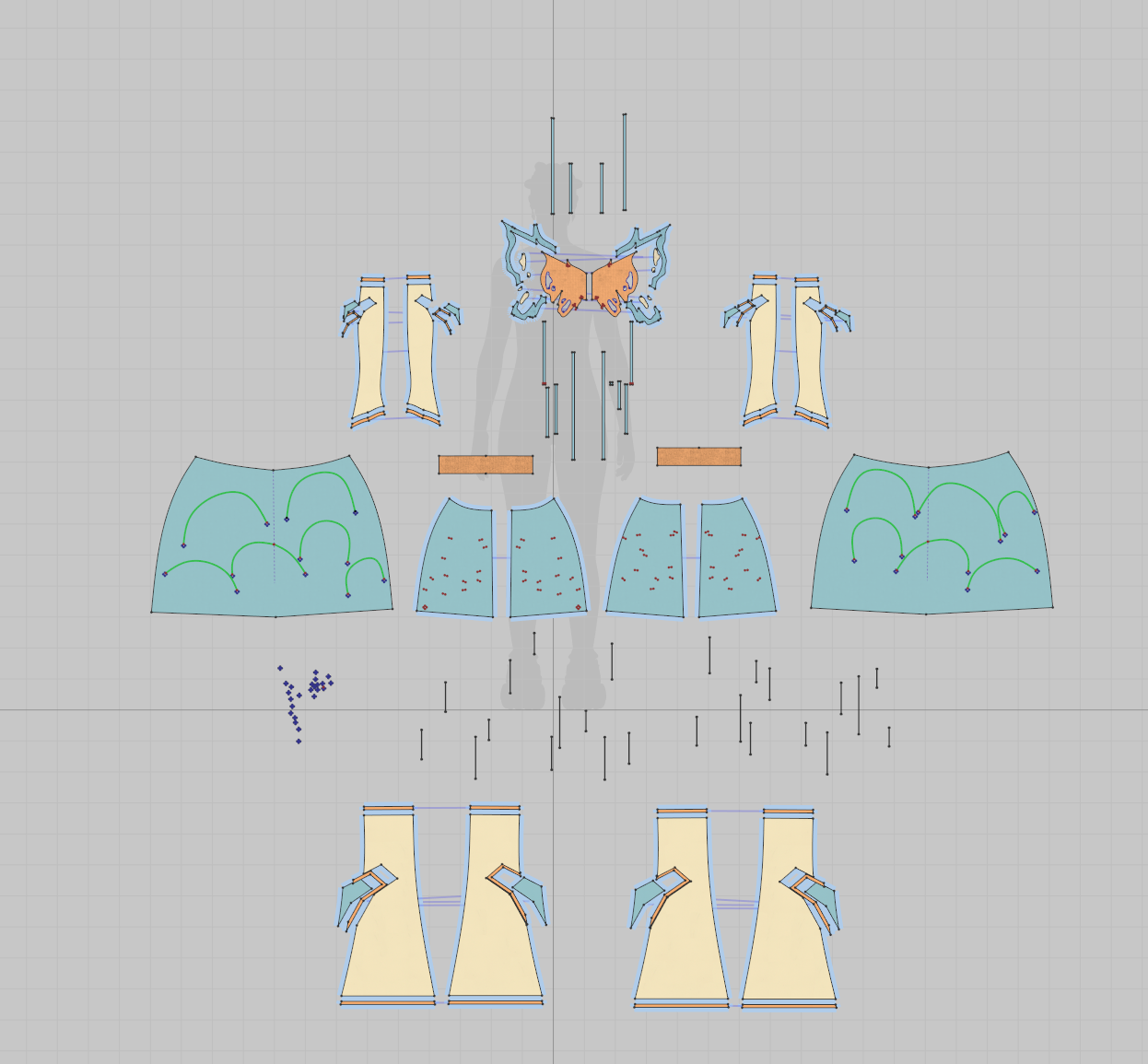
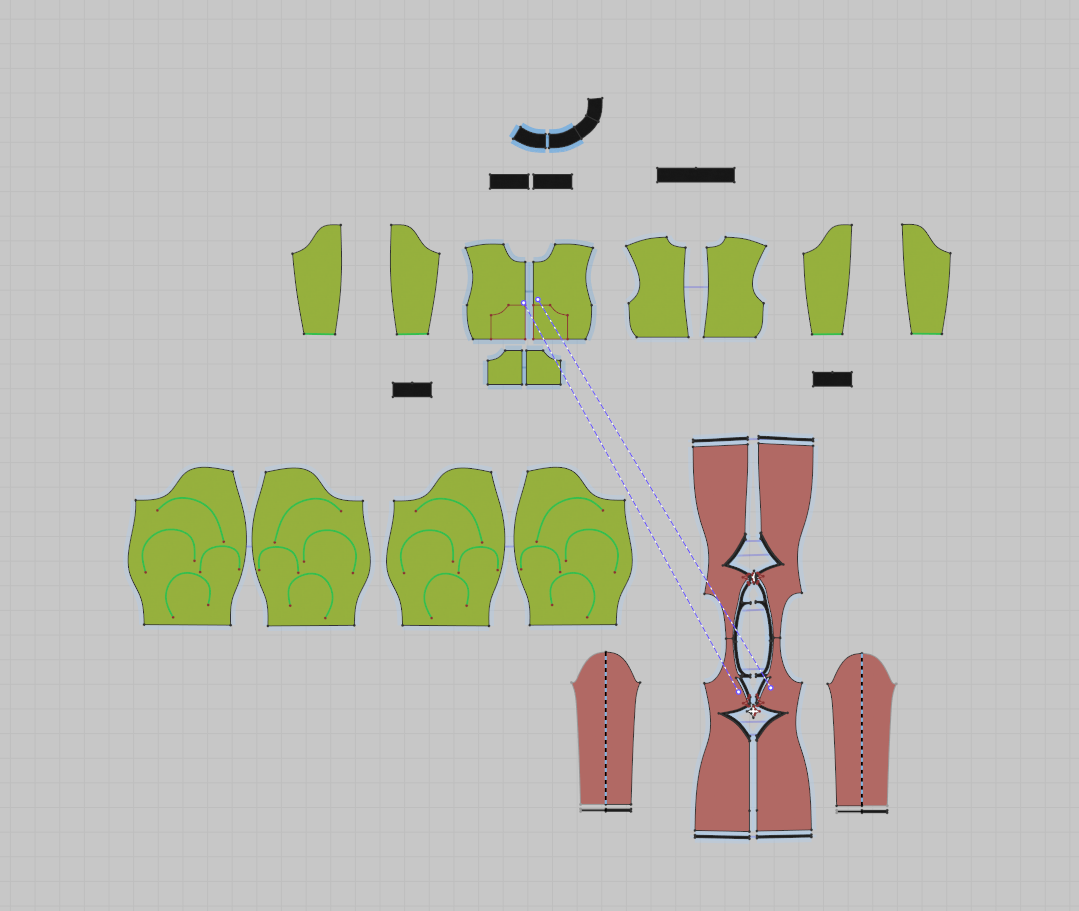

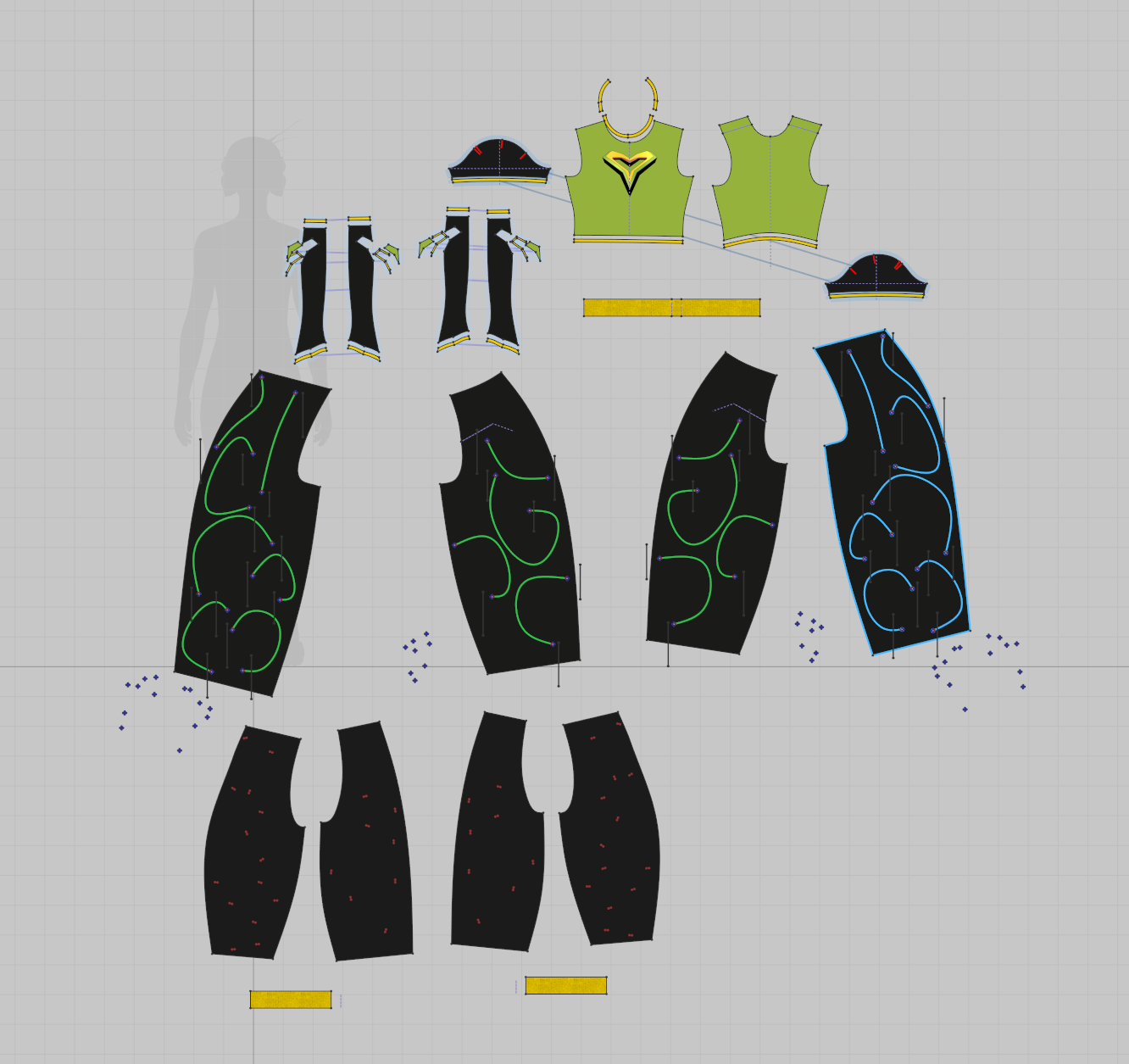
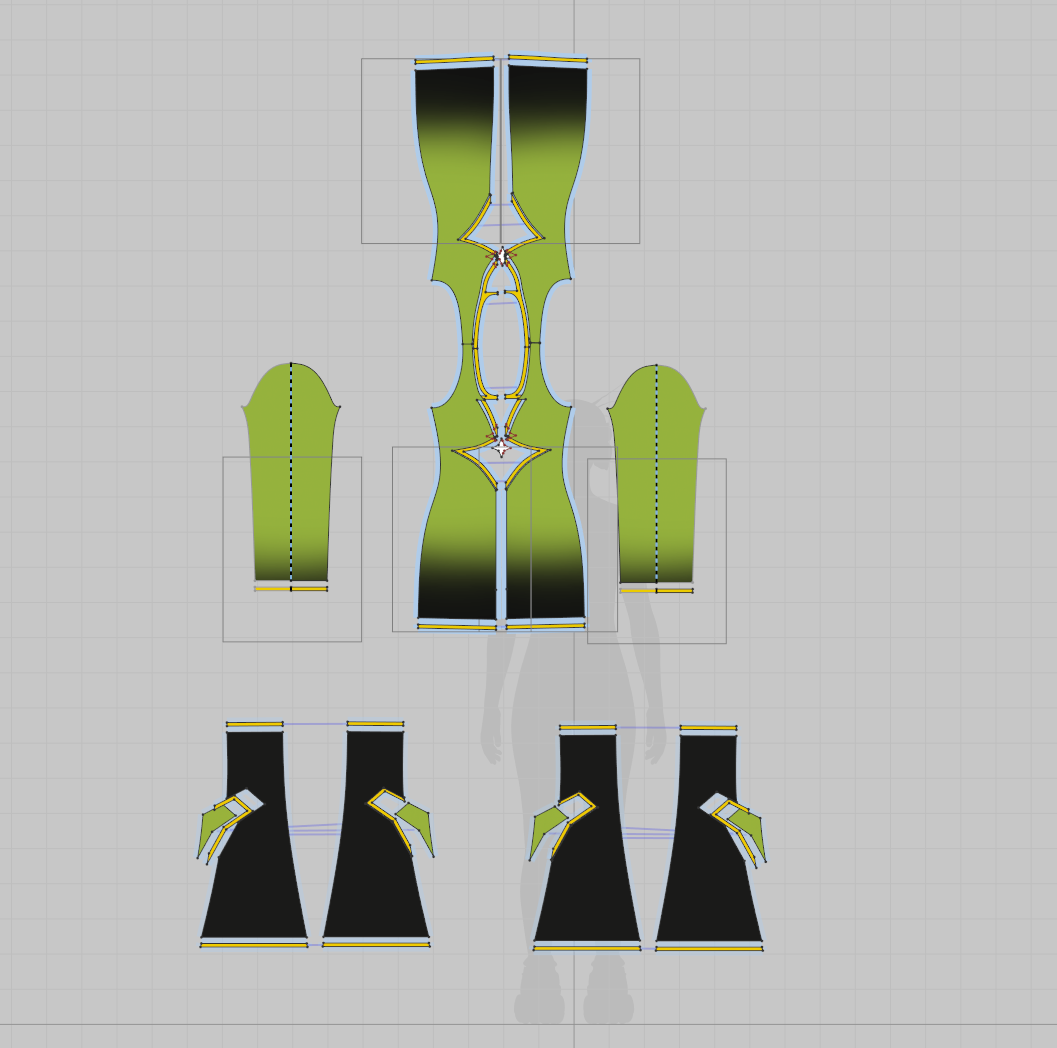

The final Looks, sorted in their respective color families:
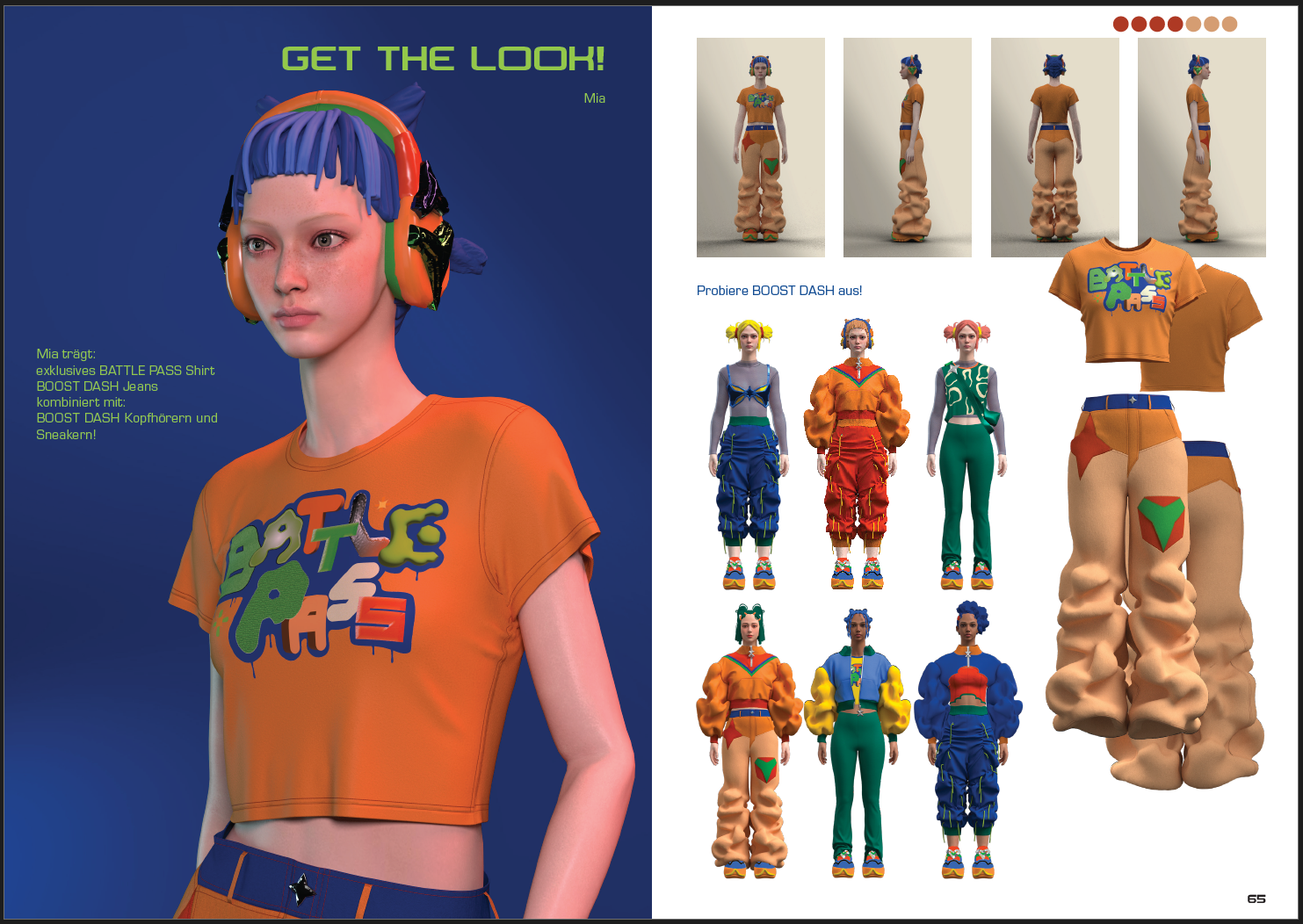
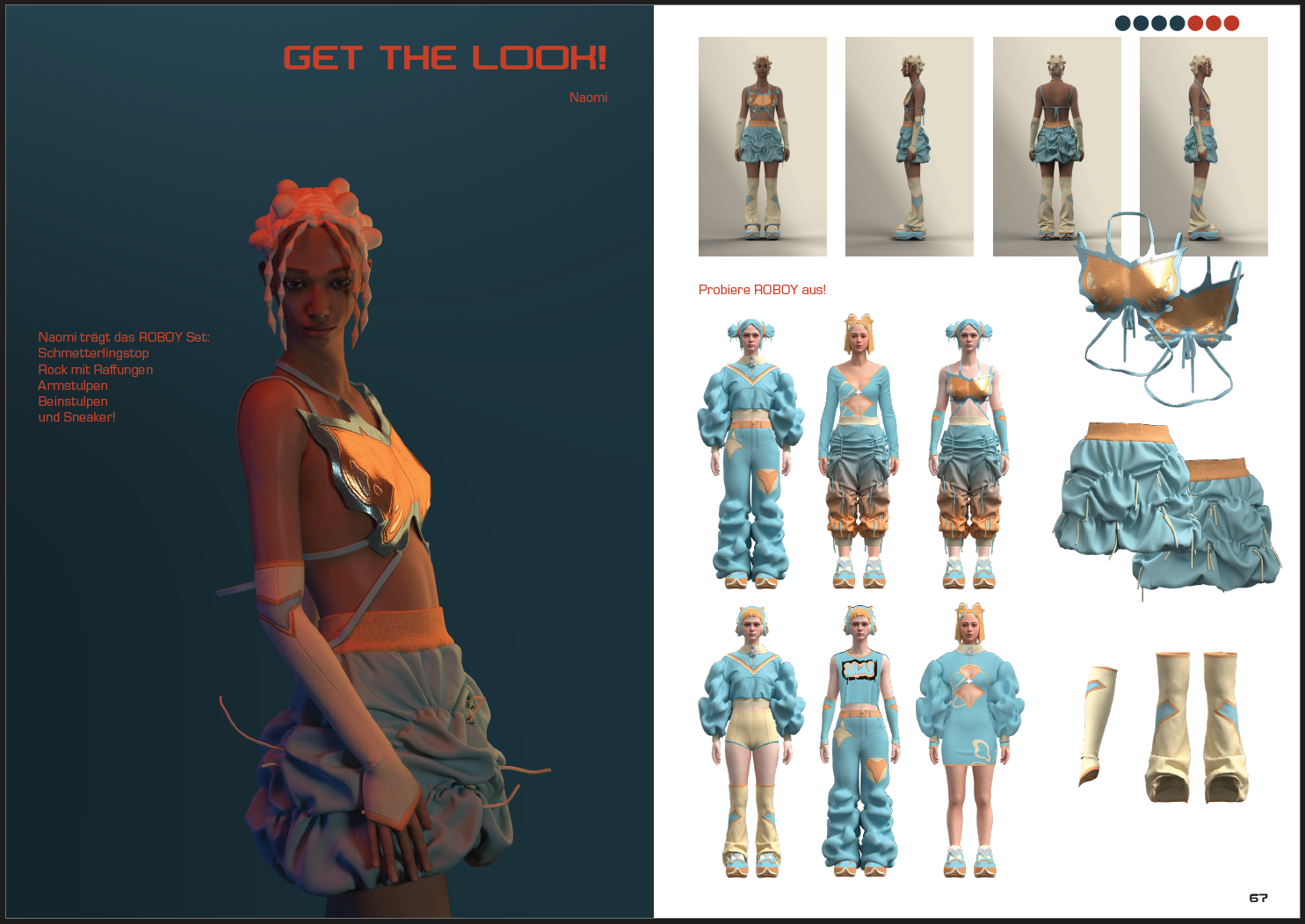


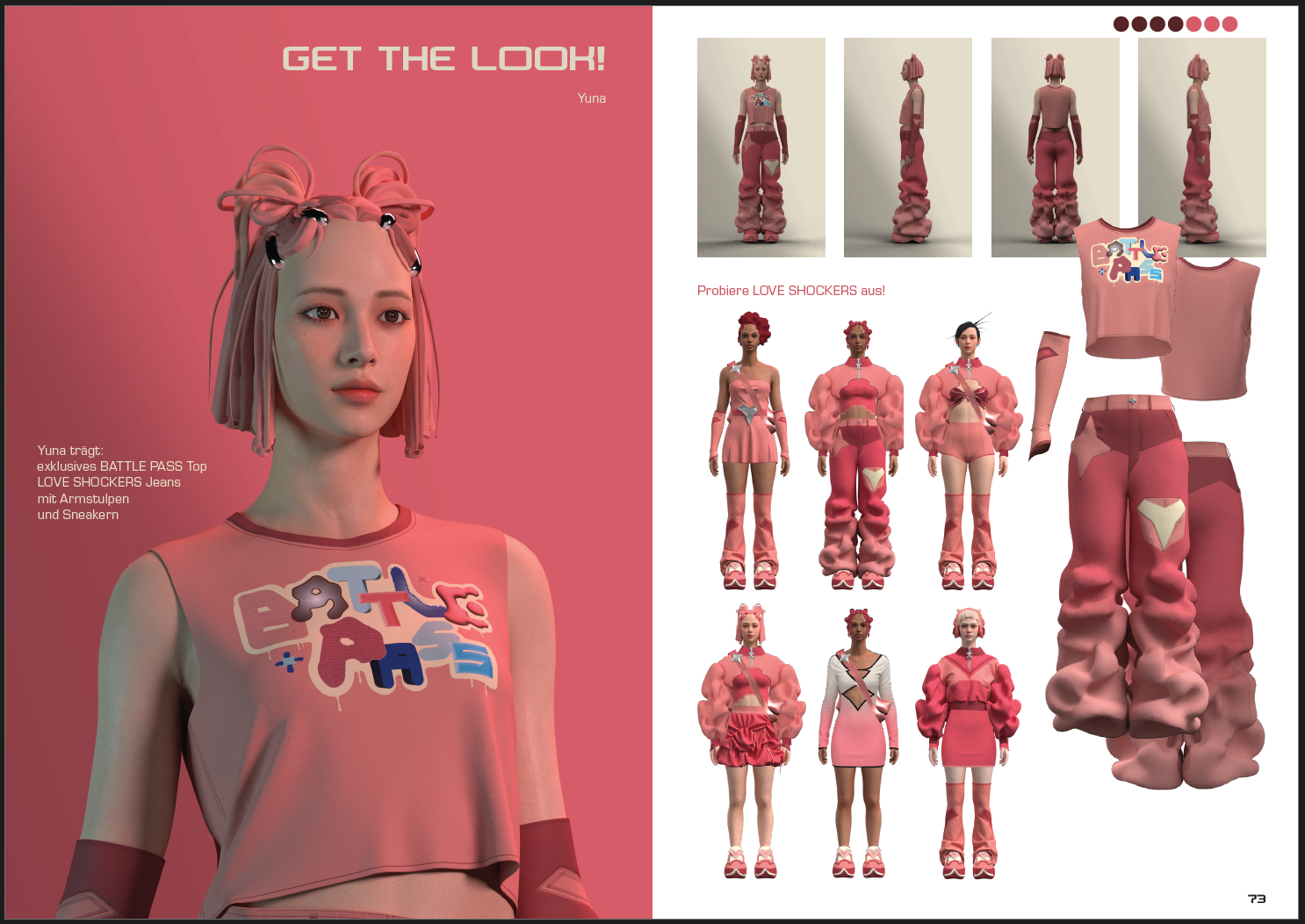
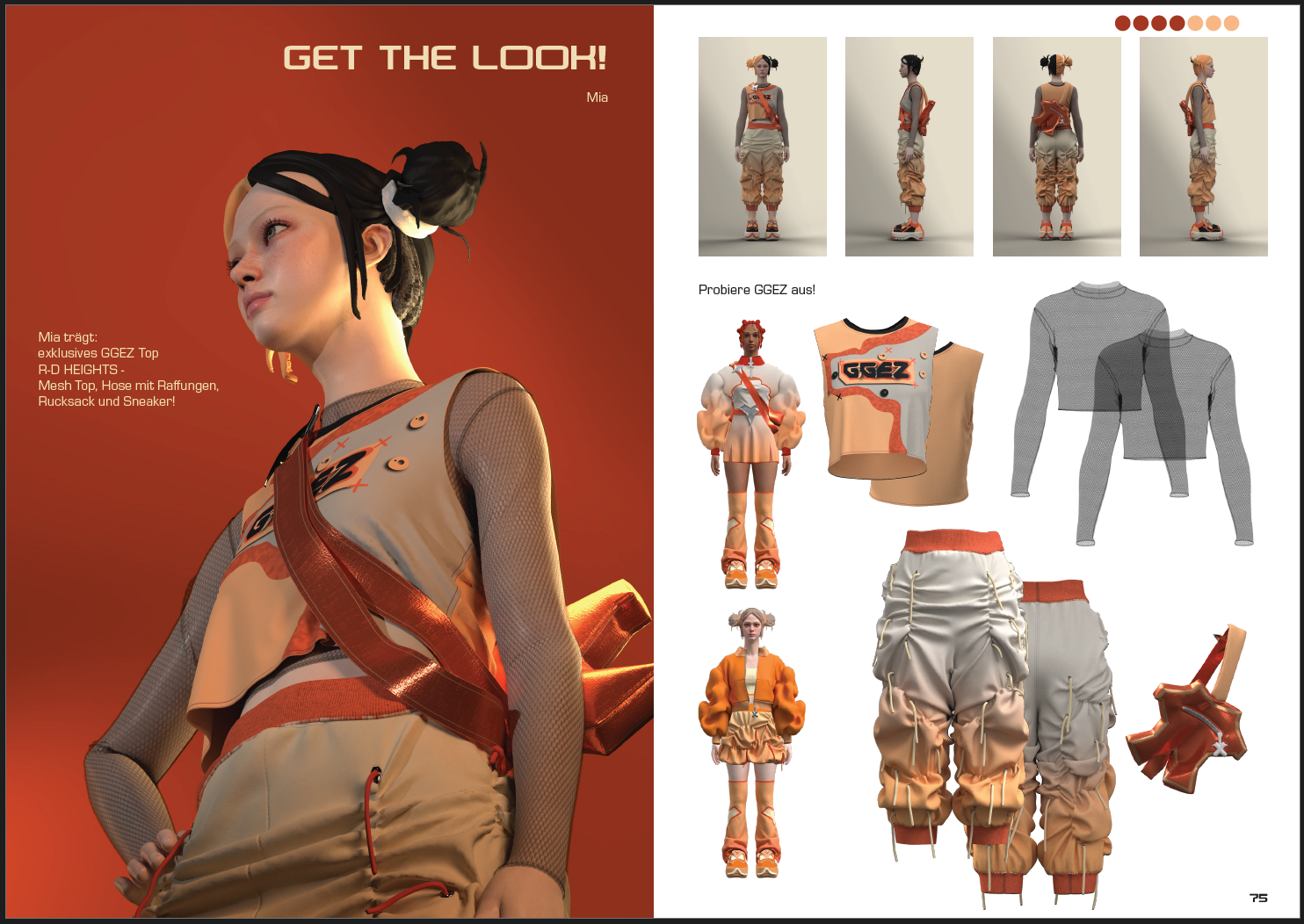
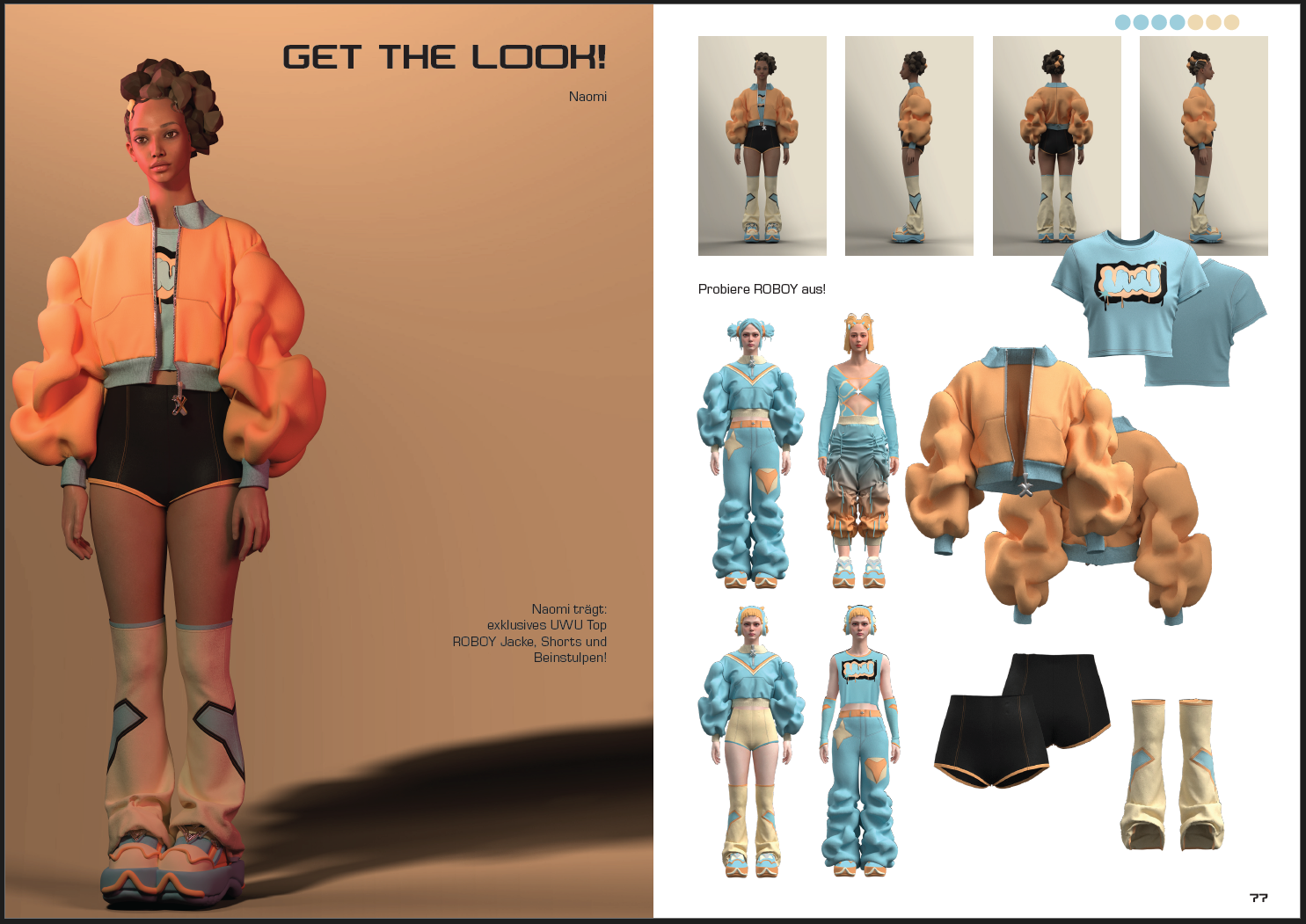
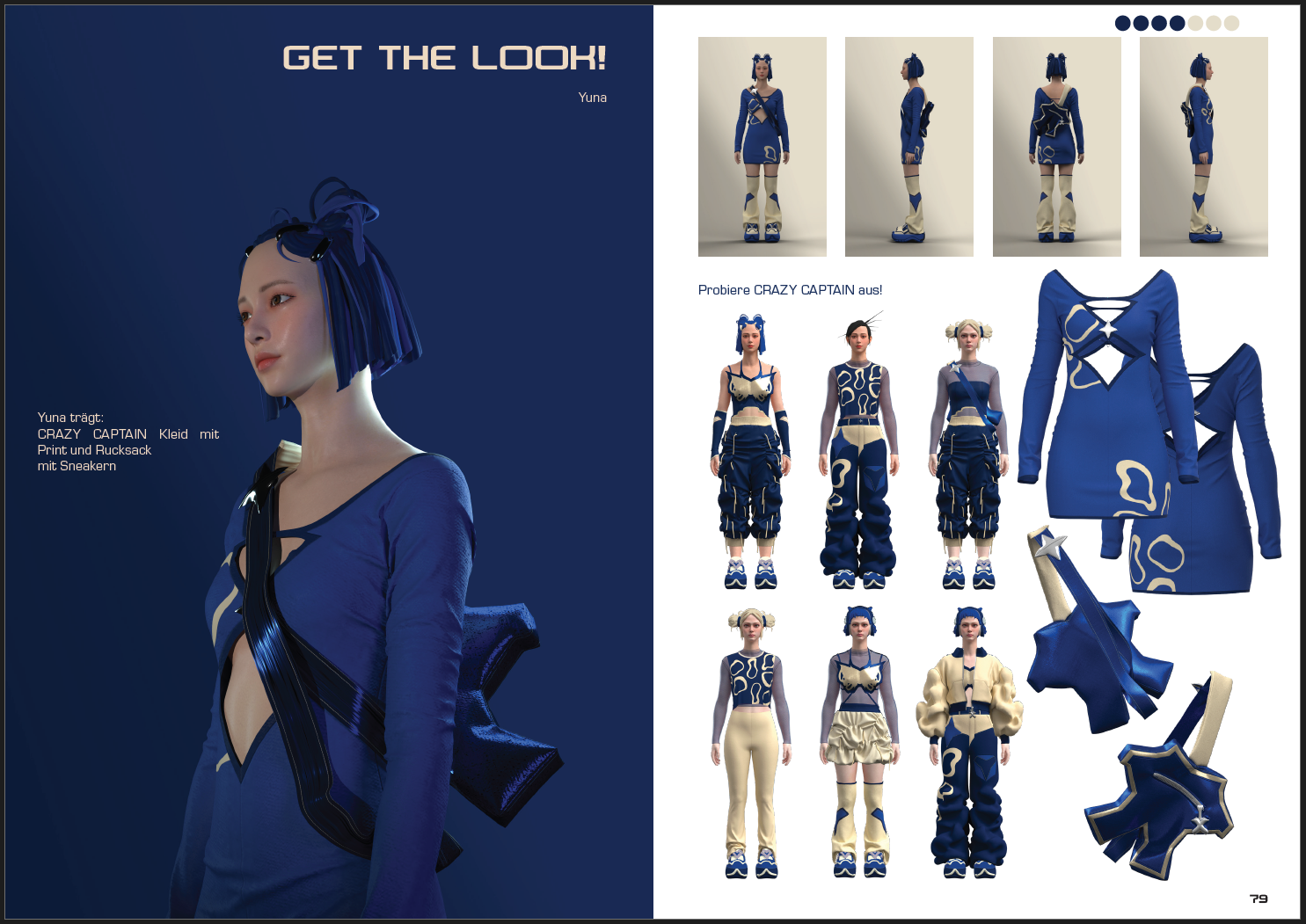


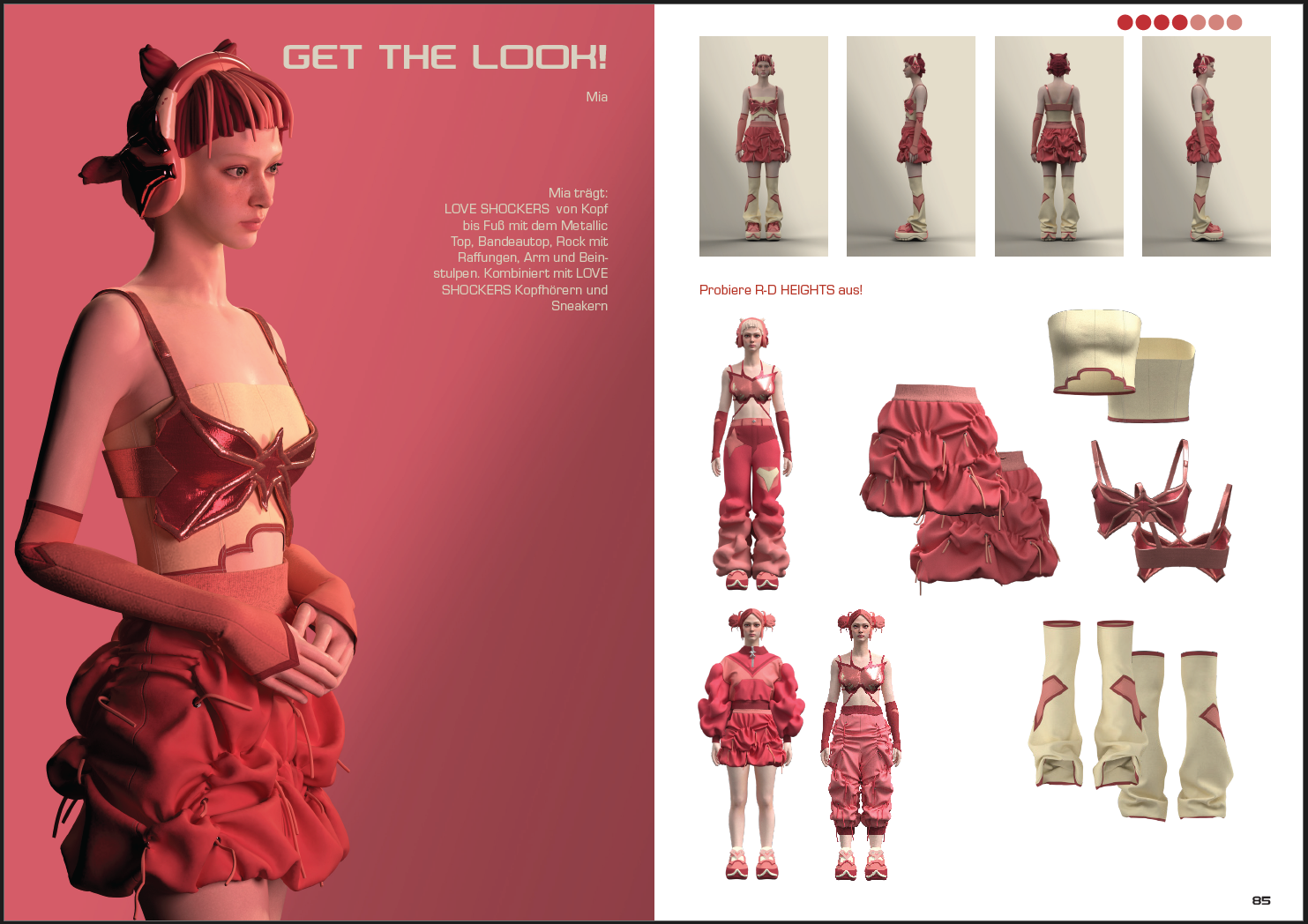
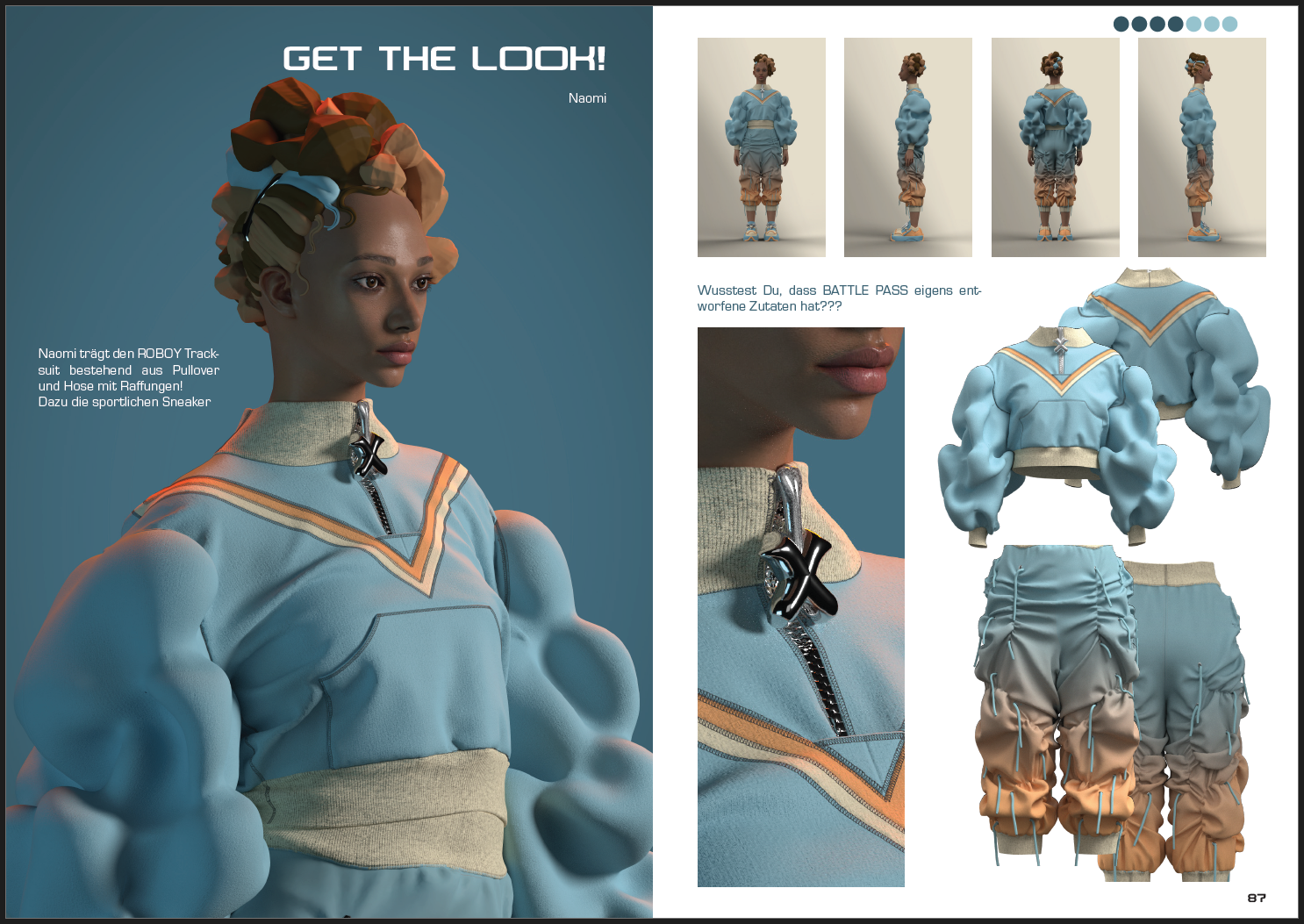
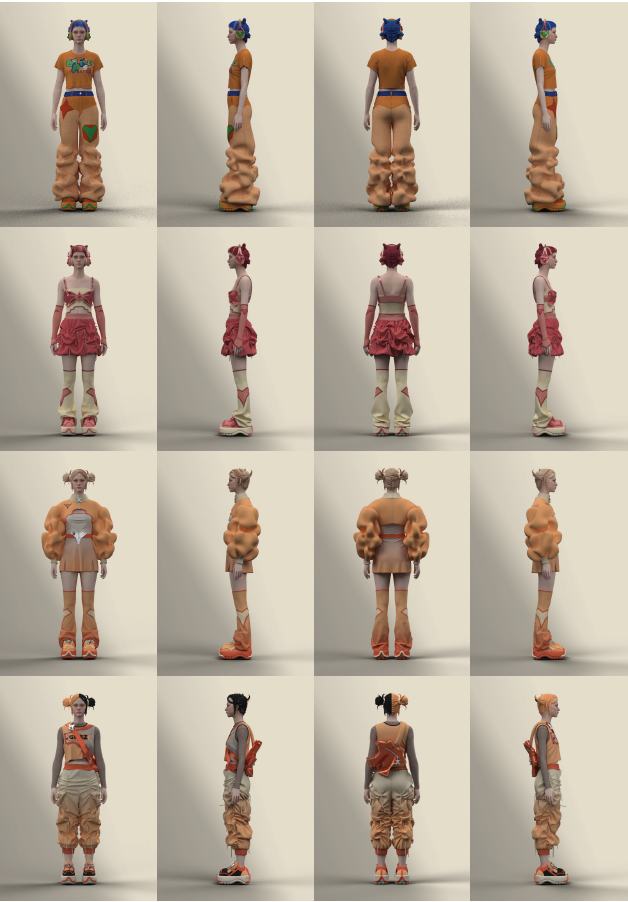
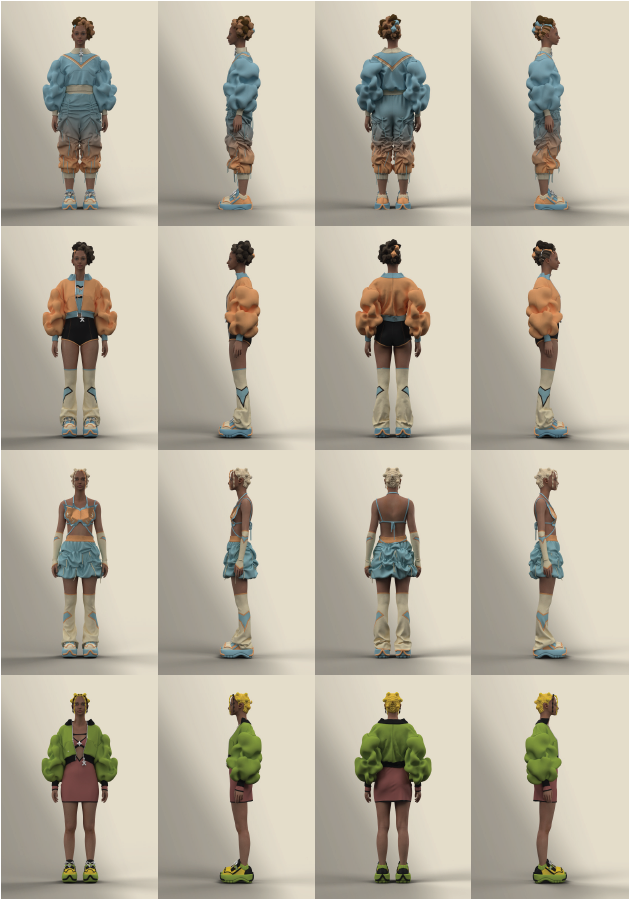
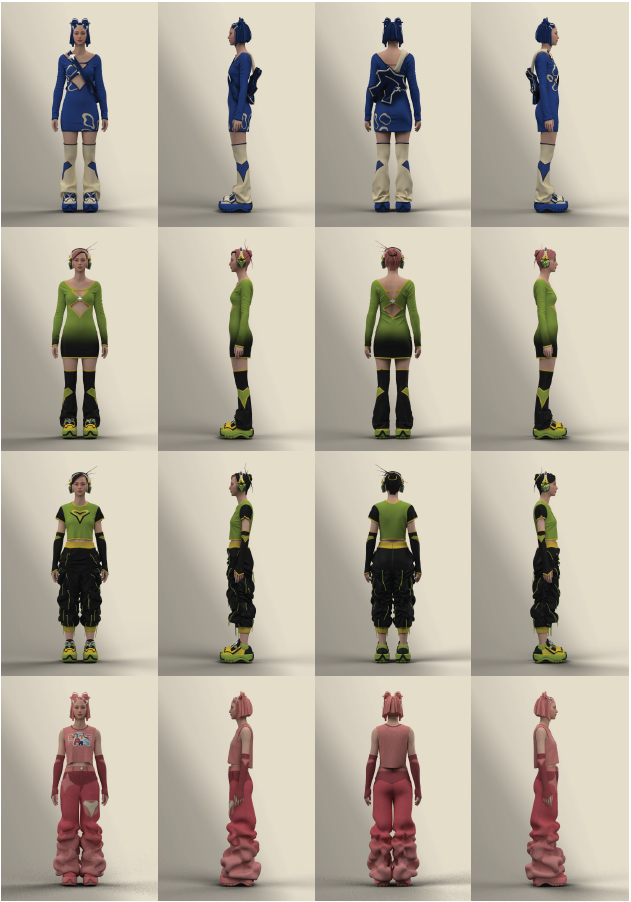
Illustrations:
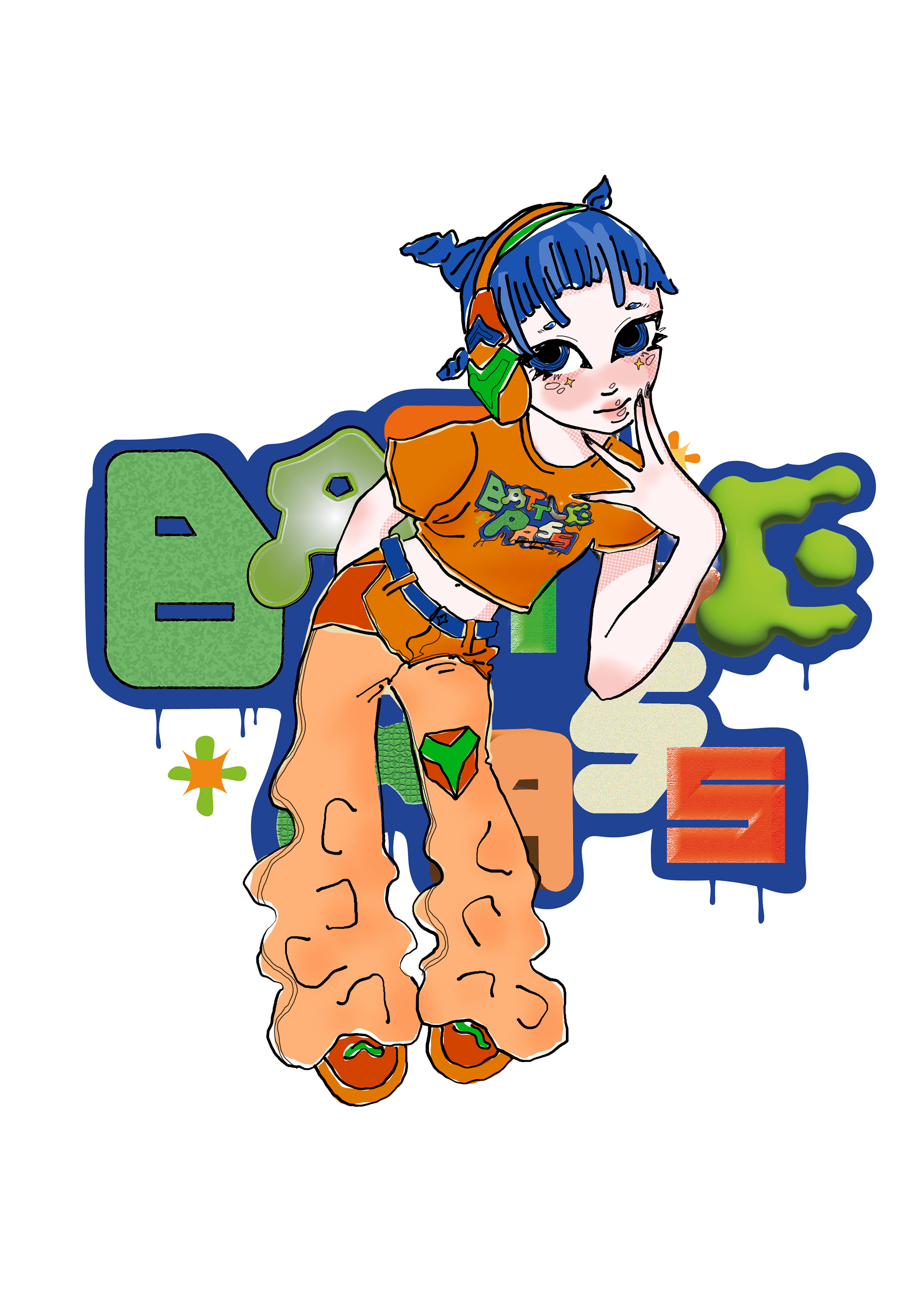
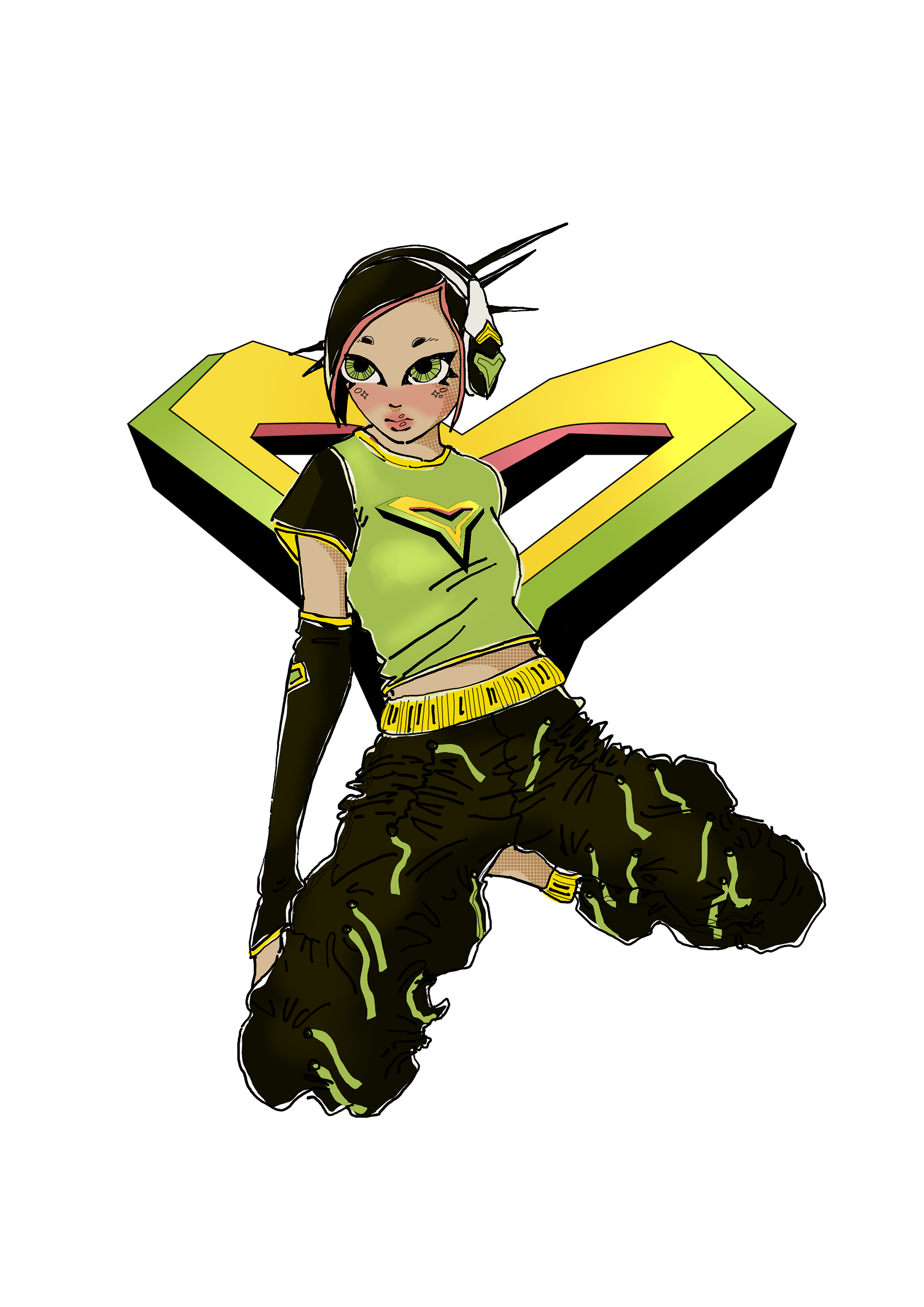
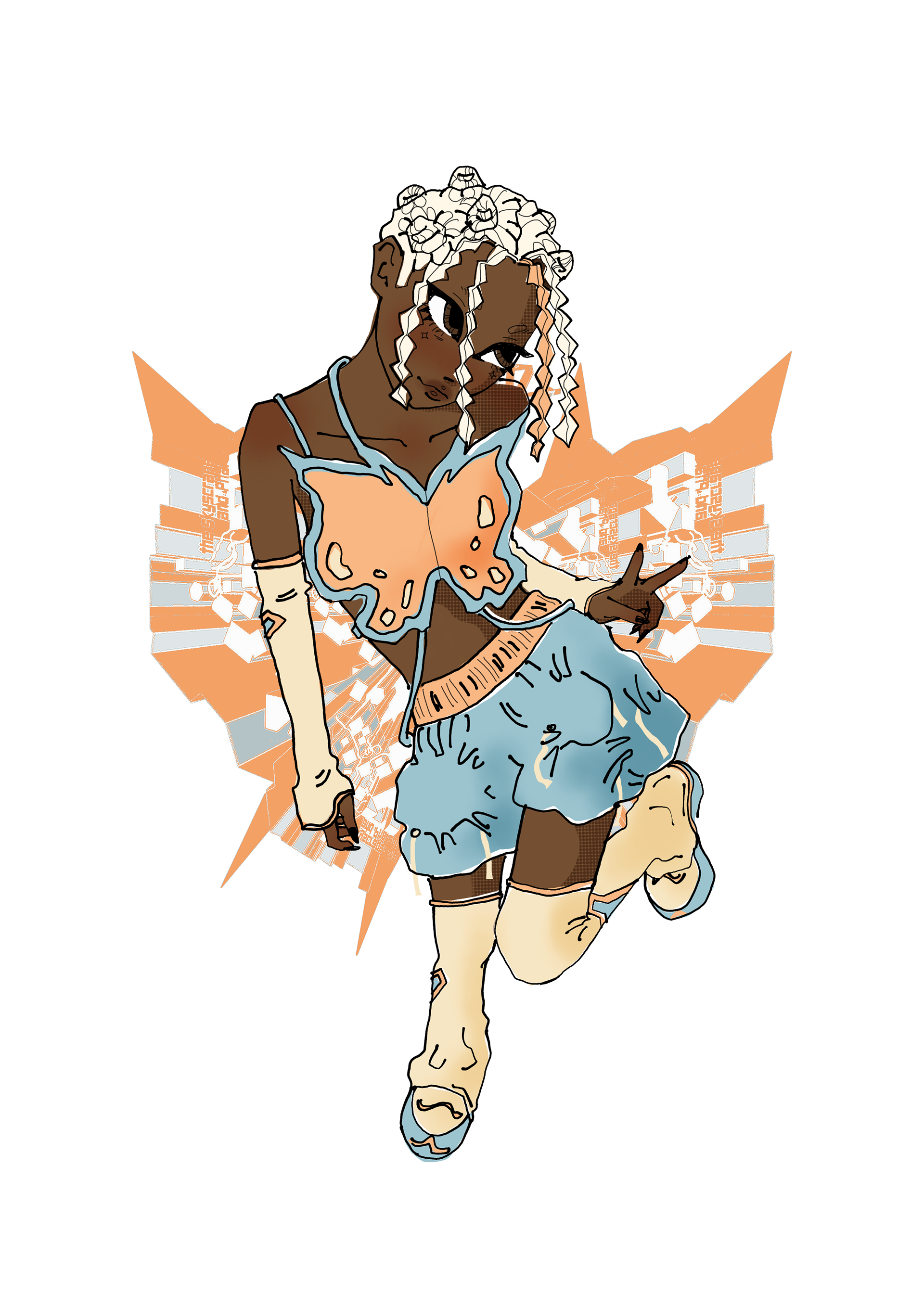
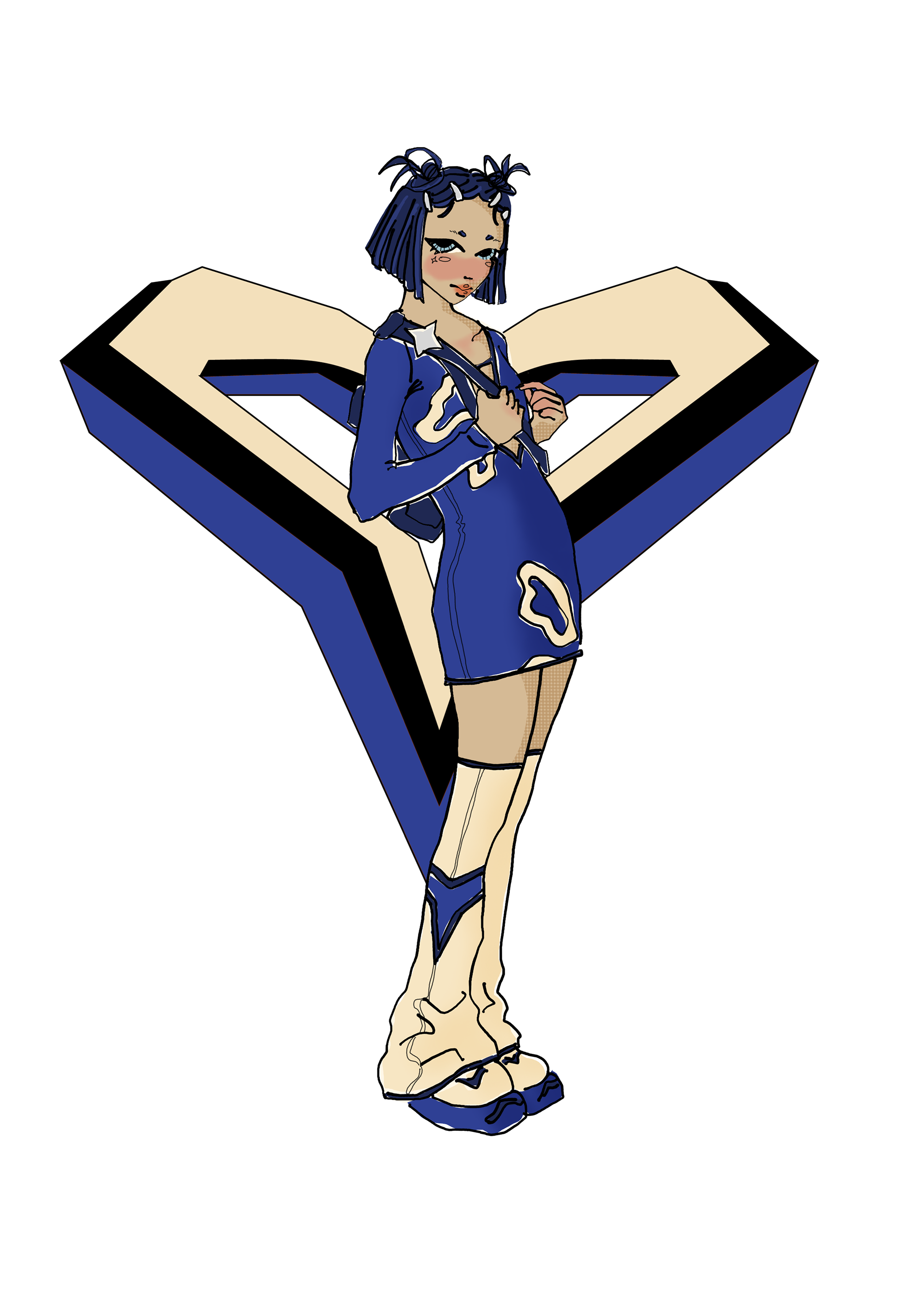

I wanted to playfully incorporate the theoretical part of the bachelor thesis into the overall concept of the collection and designed a magazine. I also drew some fun little illustrations of the looks. The headline font is a fanmade version of the original JSRF font used ingame. Here are a few excerpts (in German).
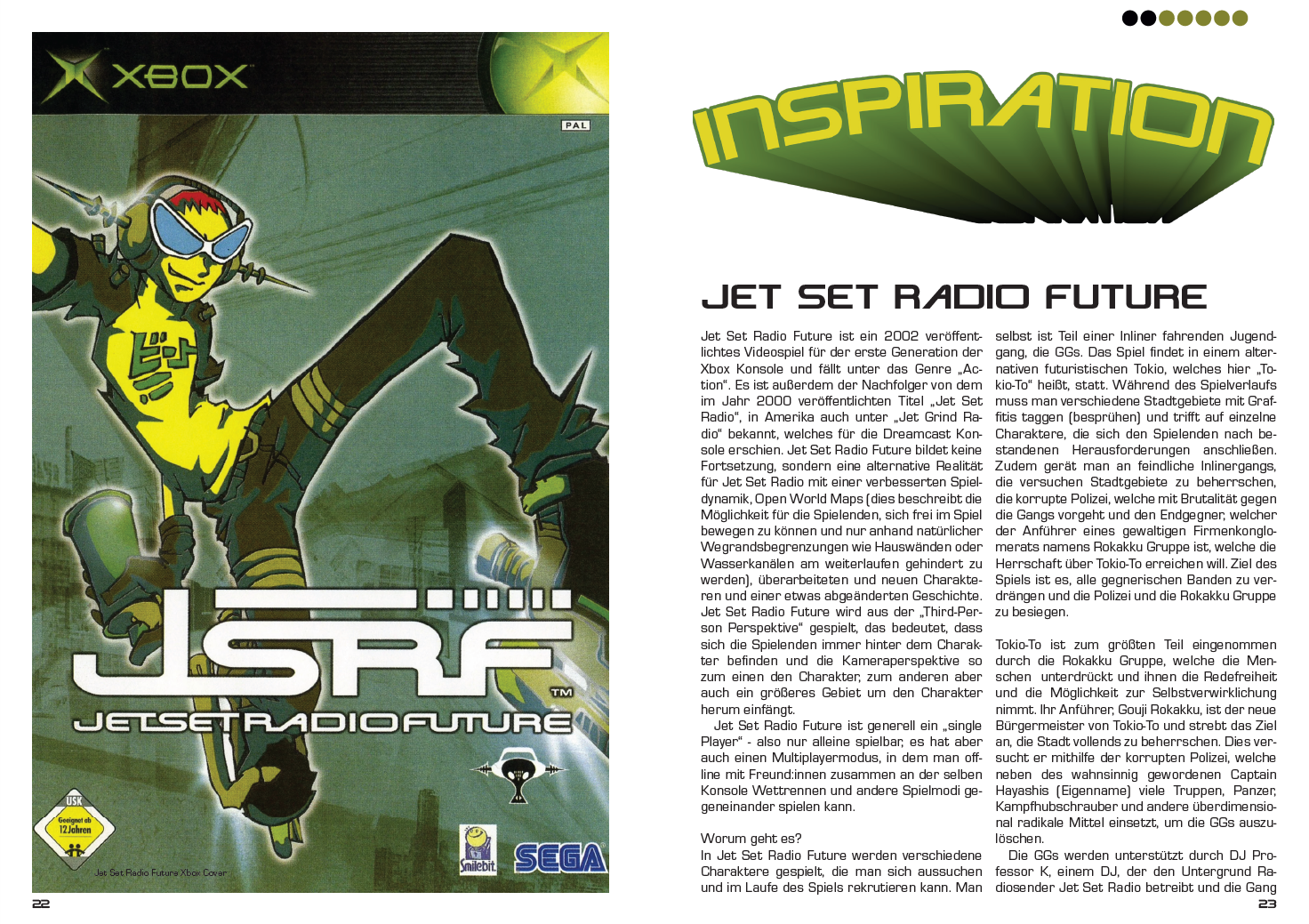
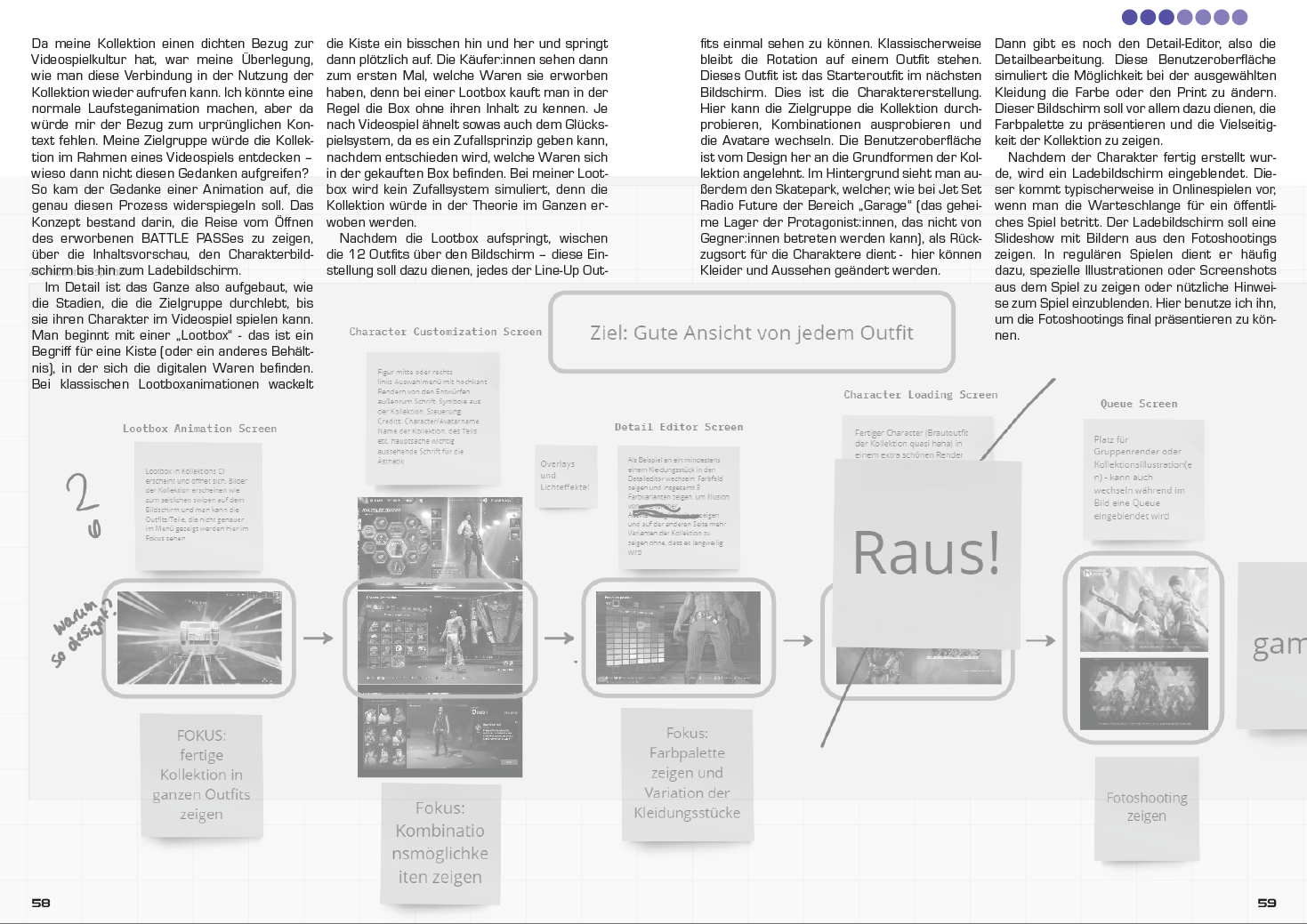
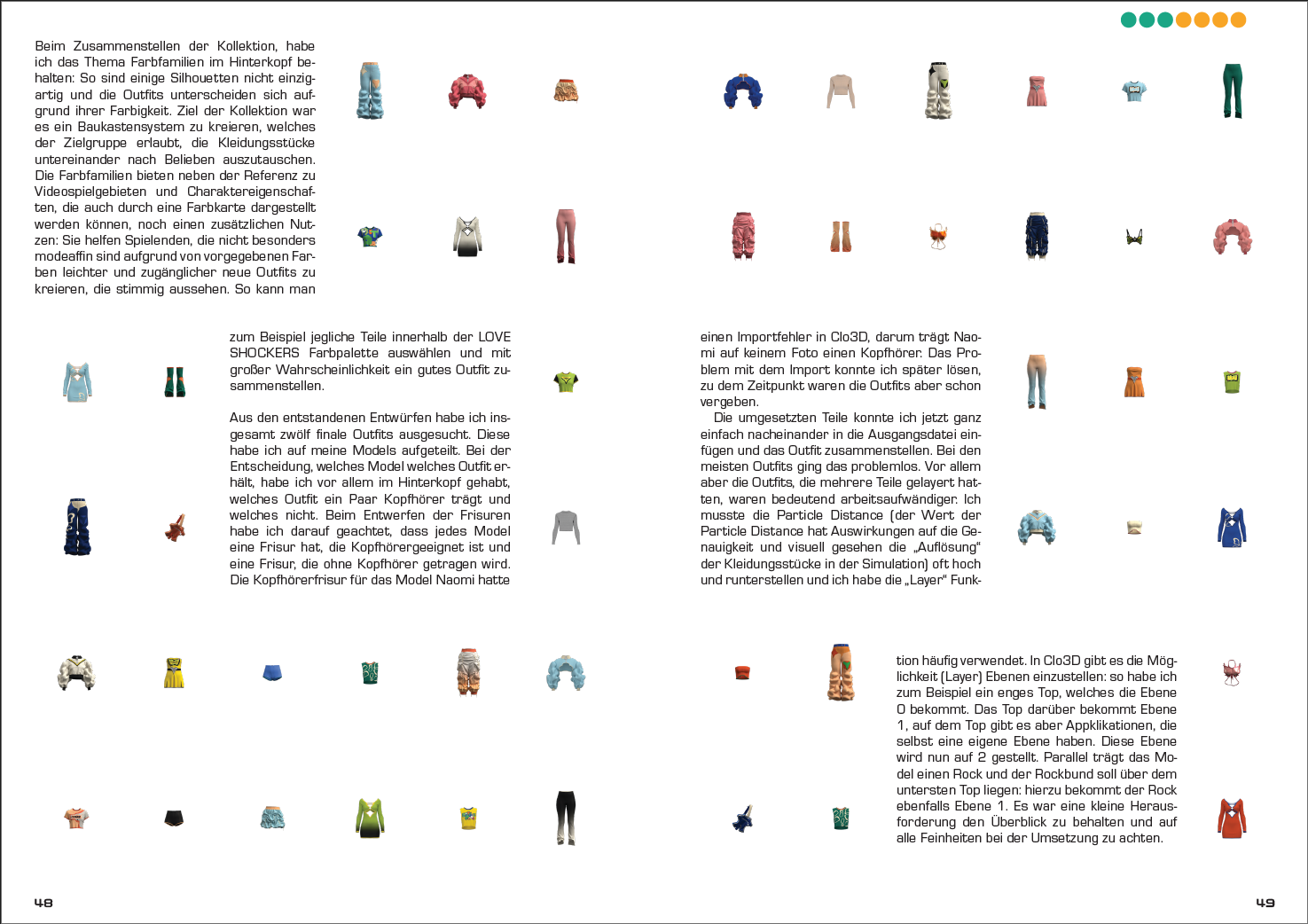
JSRF is about inline skaters. That's why I felt it was a nice homage to the original inspiration to let the models take pictures in a skatepark in addition to a studio photoshoot. I implemented it in Unreal Engine. To do this, I bought a ready-made skate park and then individualized it in the program and built house walls around it. Next, the CLO3D files were prepared for export and UV layouts were created, which I then imported into Unreal Engine.
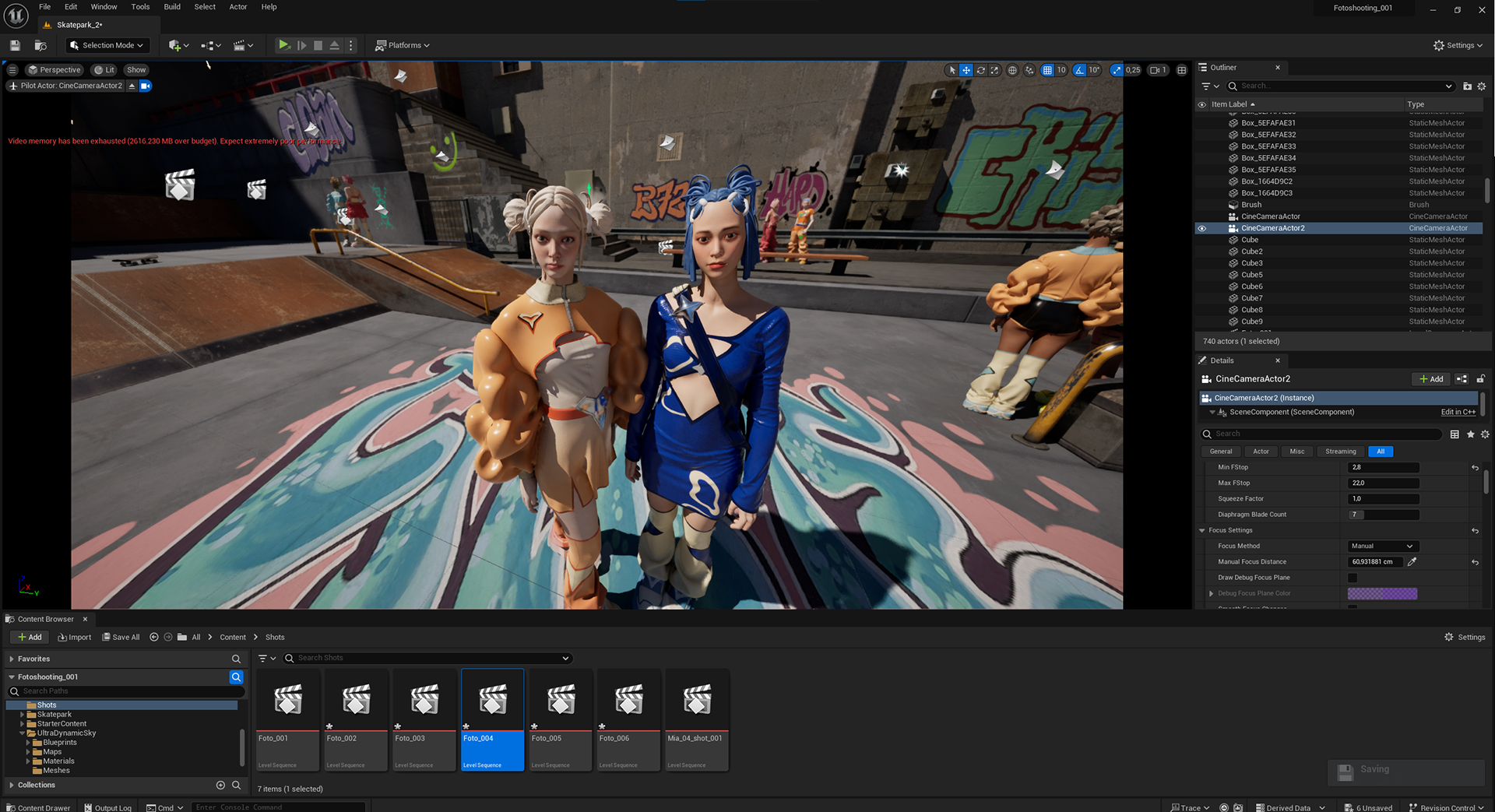
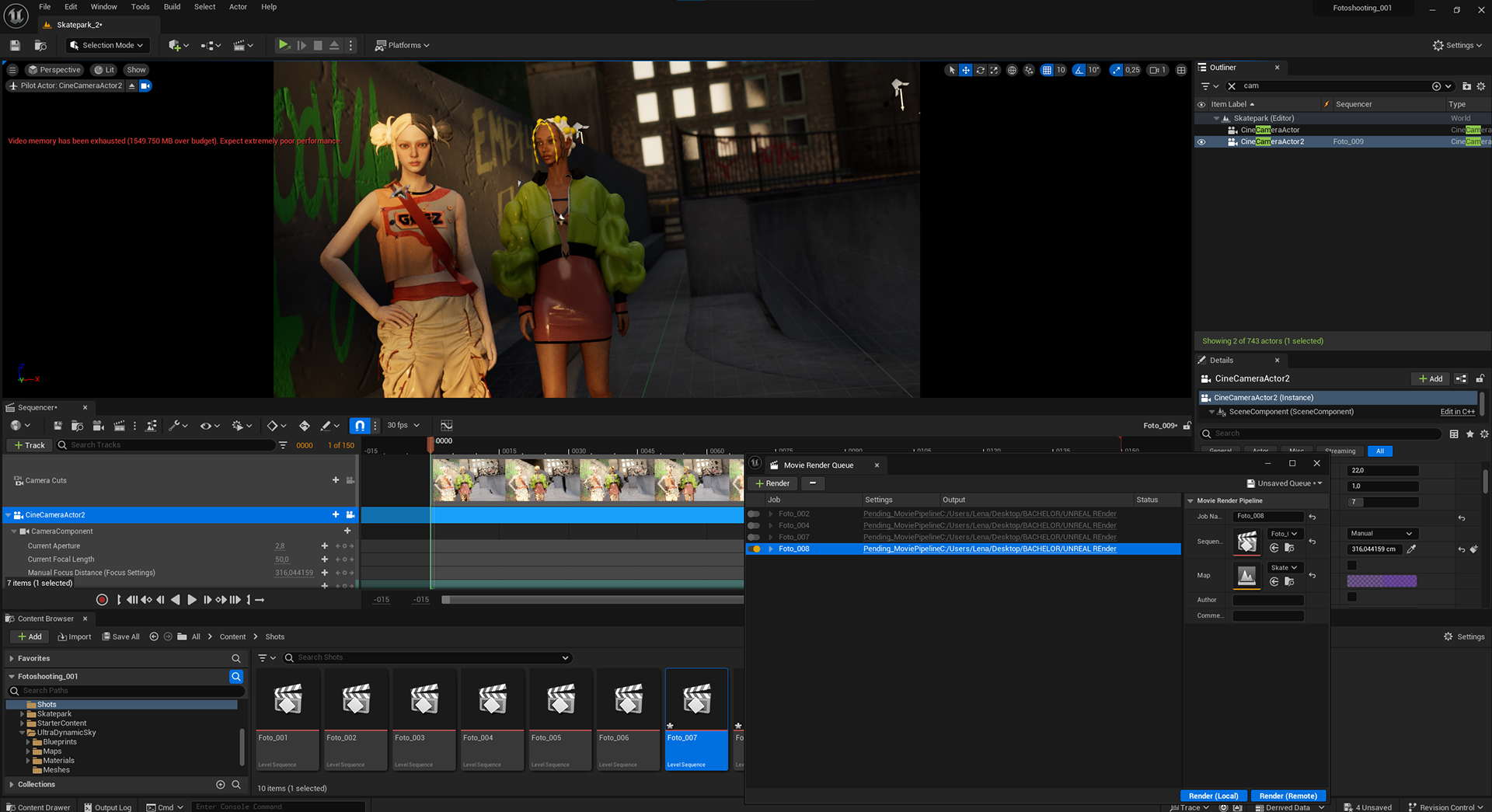


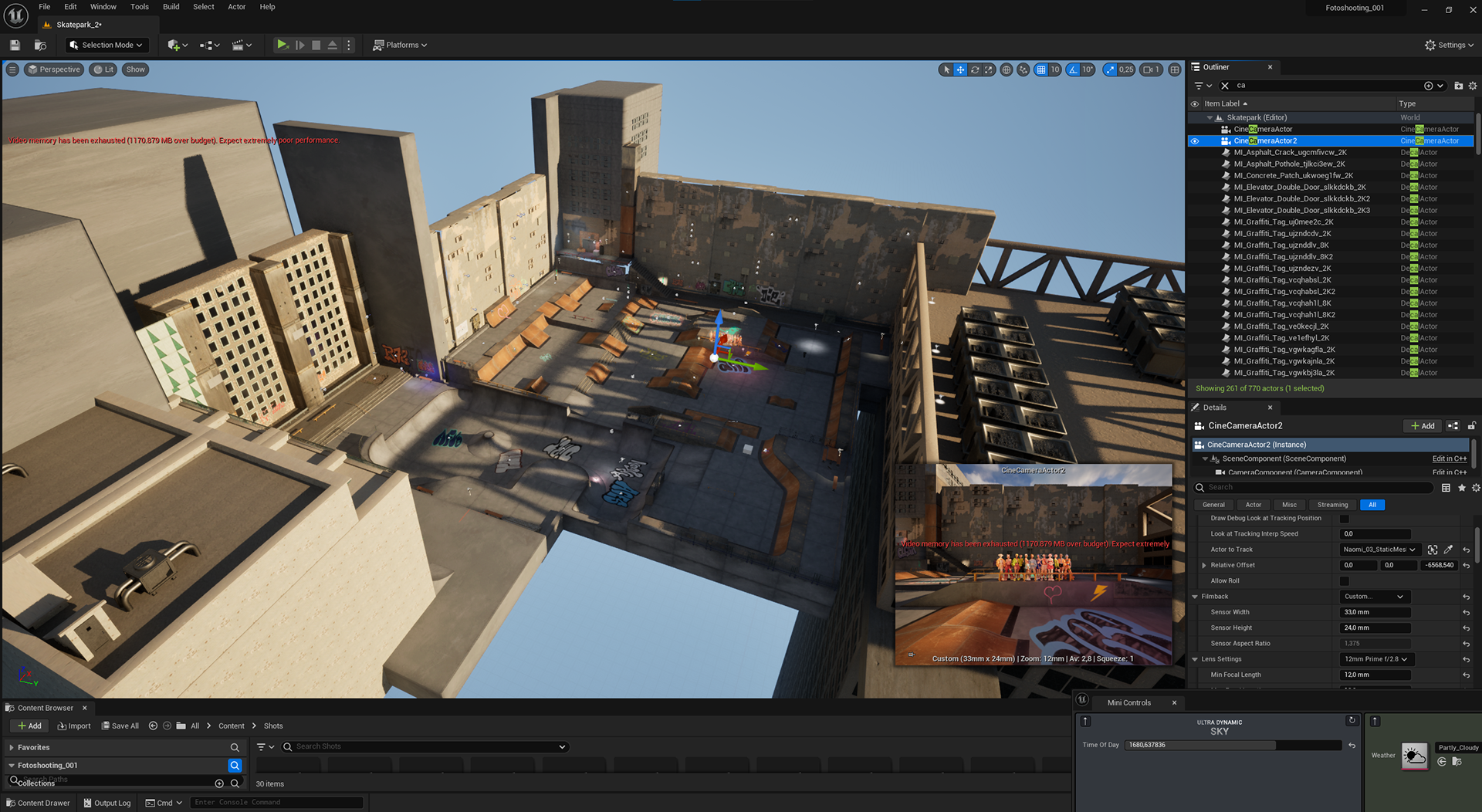
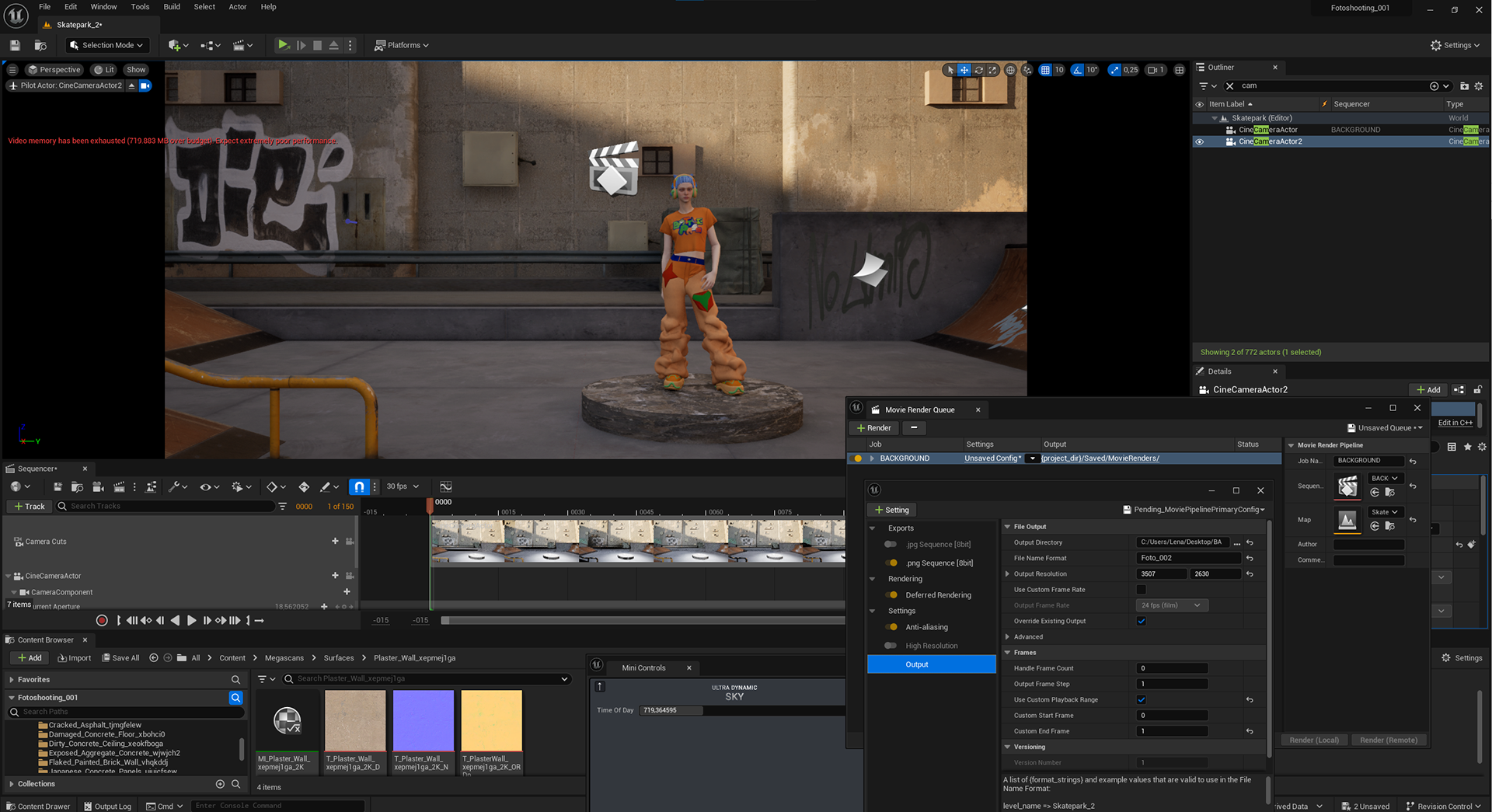

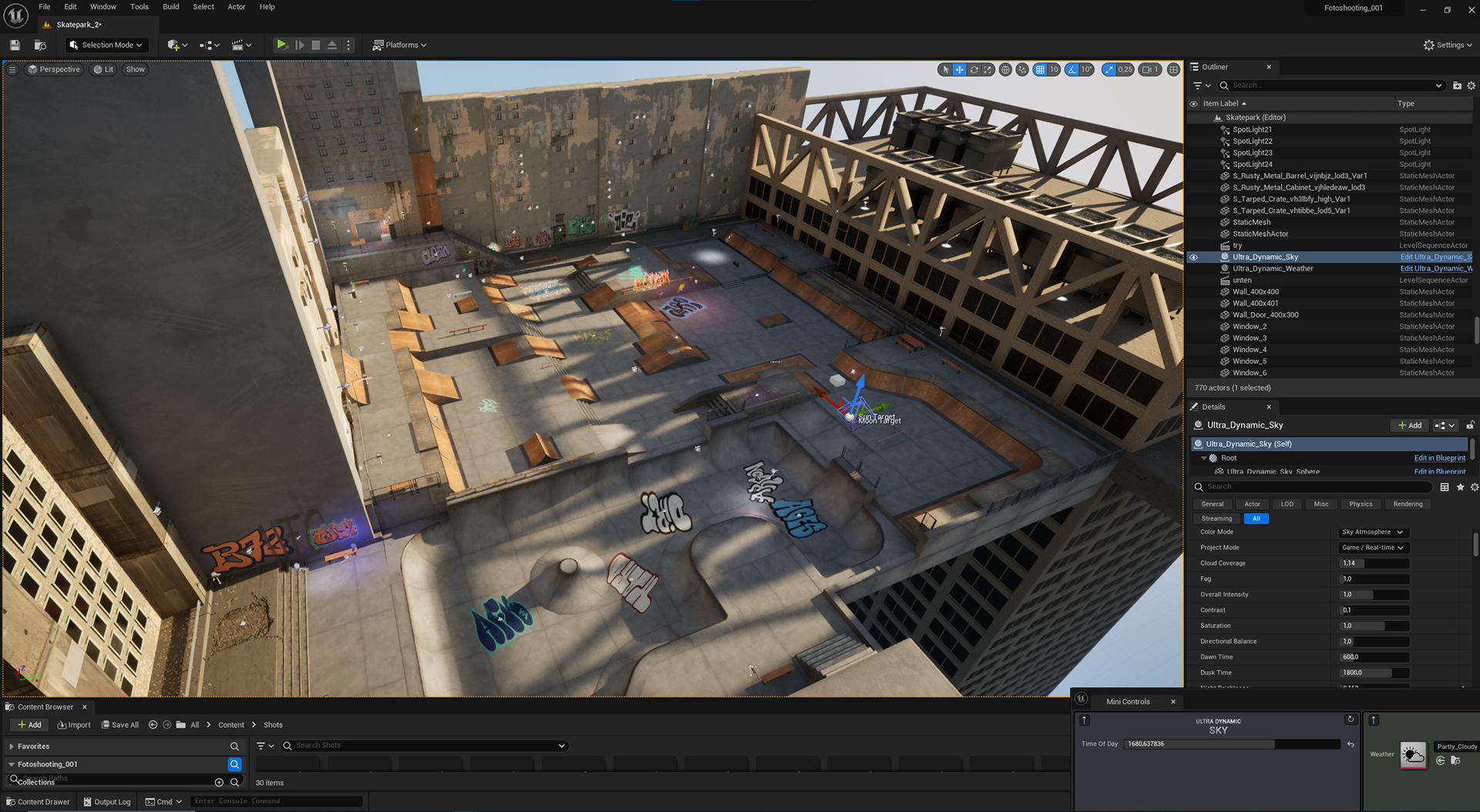
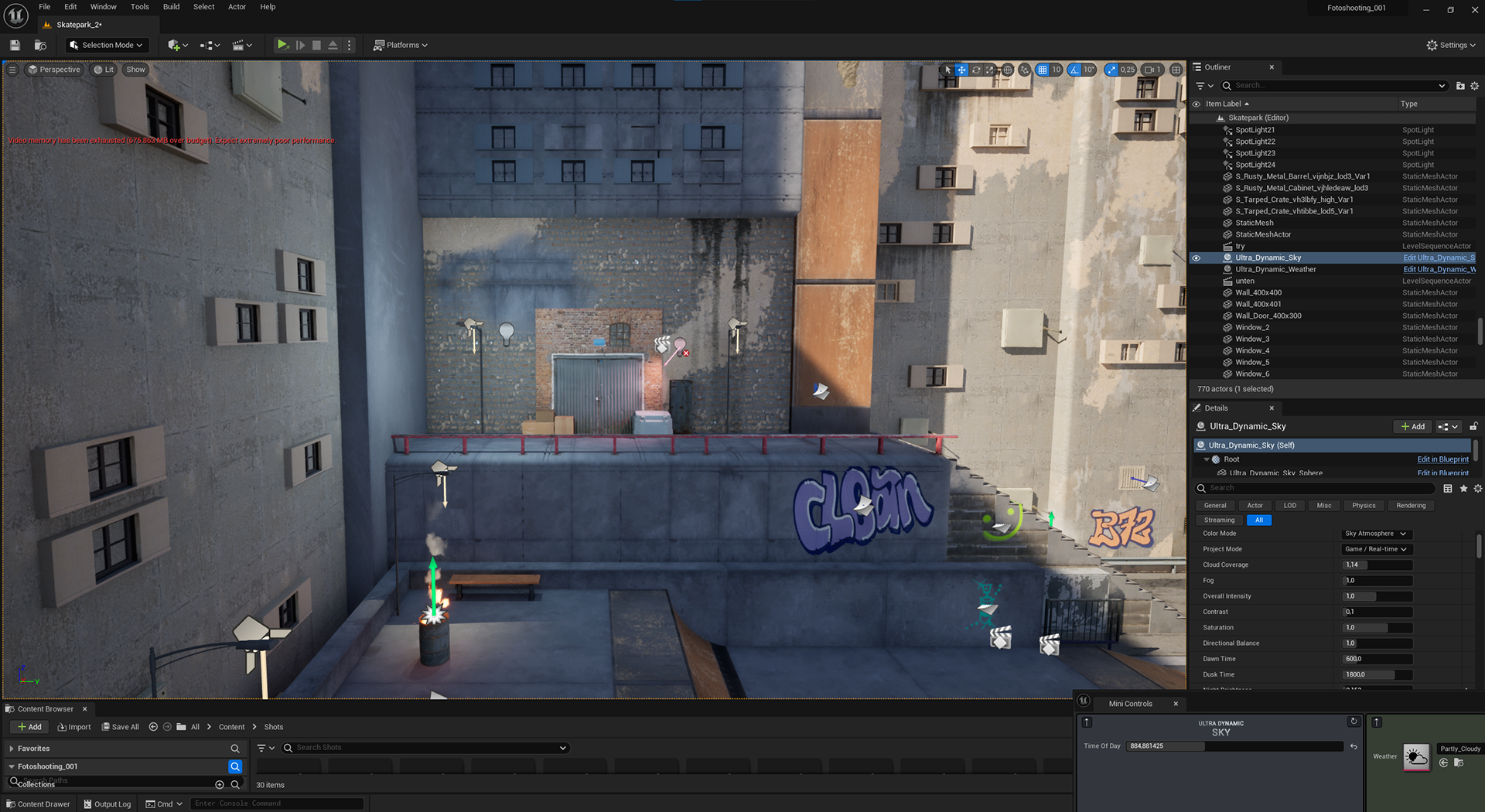

In order to take up the aspect of the application in a video game again, instead of creating a classic catwalk animation, I thought about creating an animation that simulates buying a Battle Pass containing the collection and putting together an outfit.
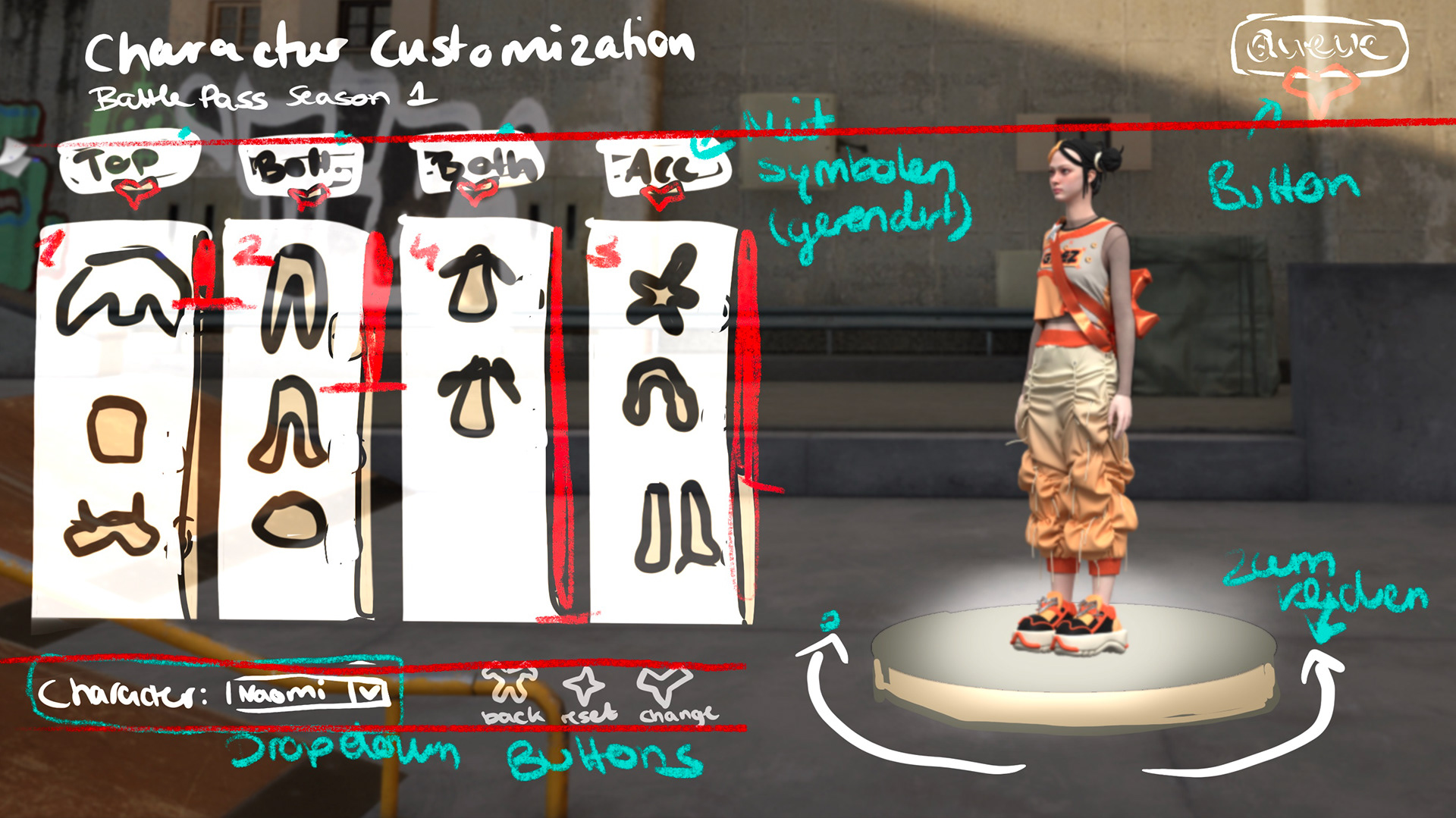
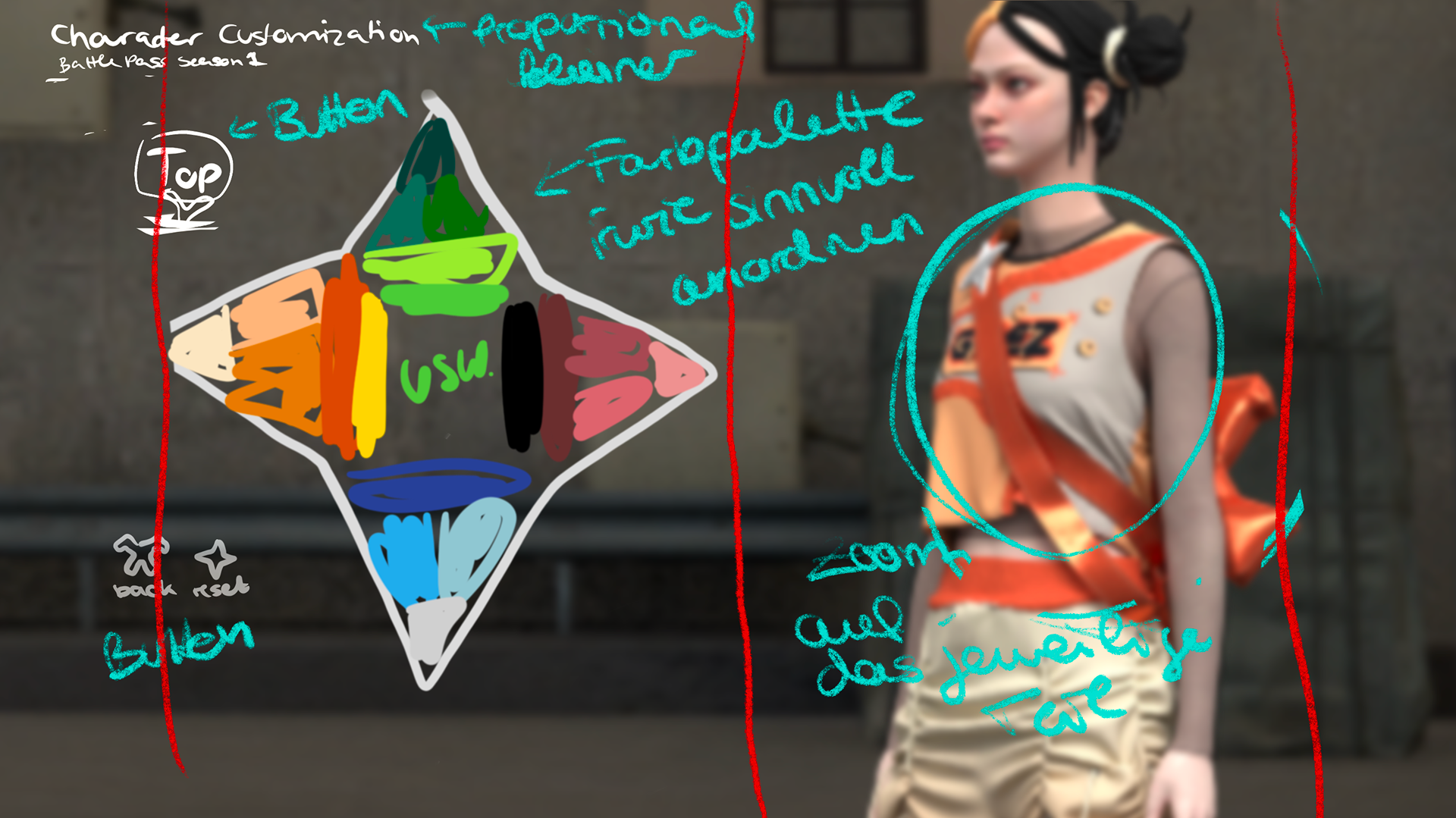
The first screen shows a loot box that pops open. Out of it come the 12 final outfits, which rotate and stop on one outfit. This screen is intended to replace the catwalk. On the second screen we see the character editor, in which the avatar and clothing can be selected. There is also a third screen where you can see a detailed editor. The styles of the individual items of clothing can be selected there. The fourth screen simulates the cue - this screen offers the possibility to see game art in some games. I have used it to present finished renders. The funky music is fanmade and reflects the musical style of JSRF and BOMB RUSH CYBERFUNK.
For a more complex look behind the scenes and the process fell free to visit the Rookies Entry from 2024:


